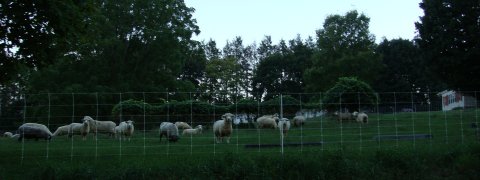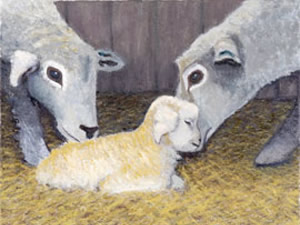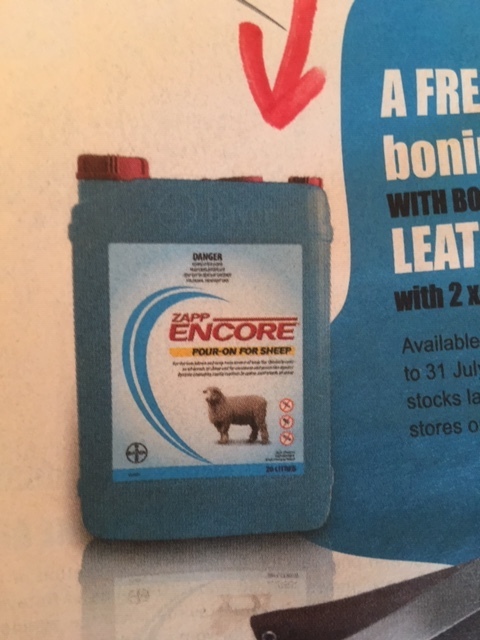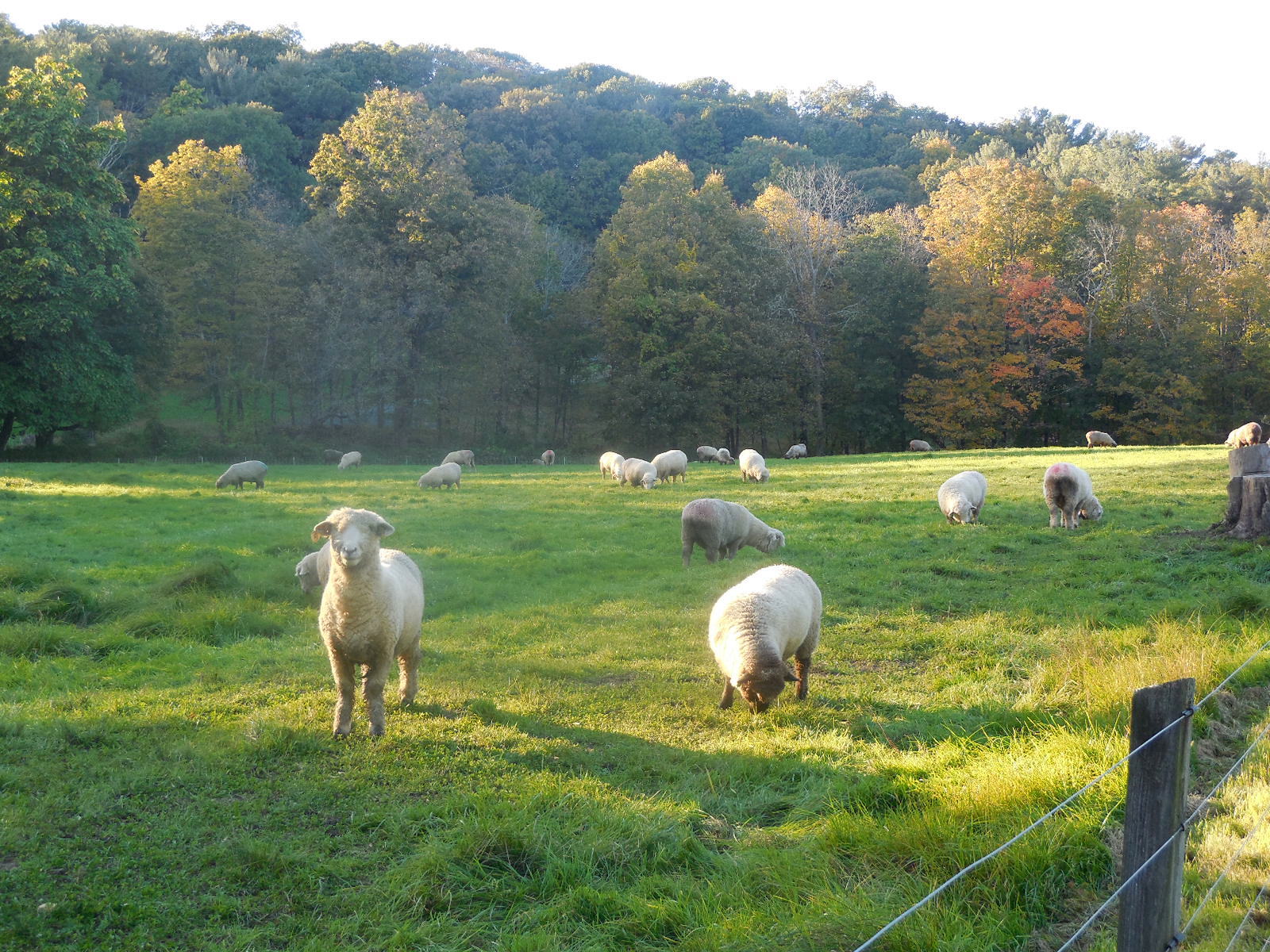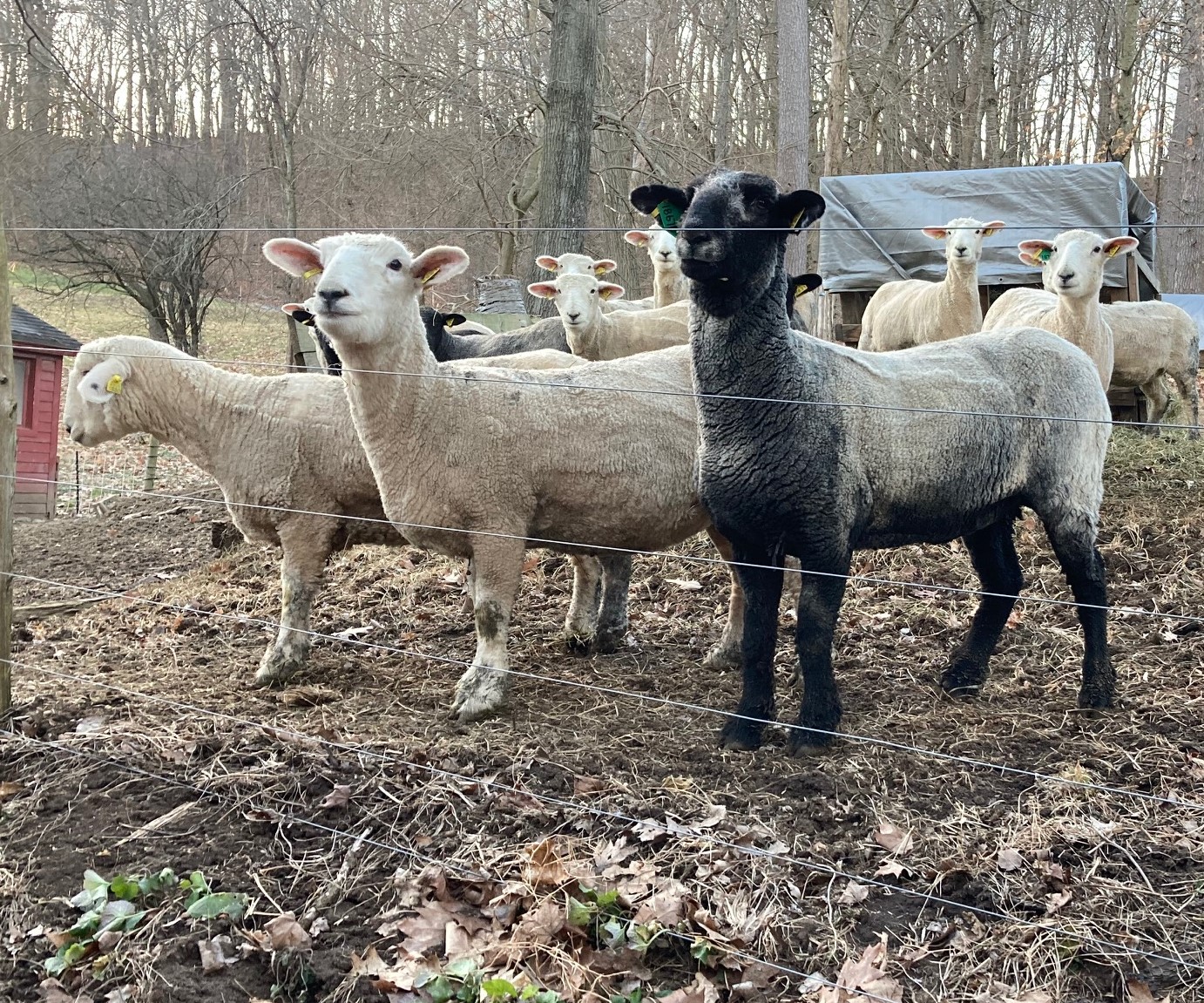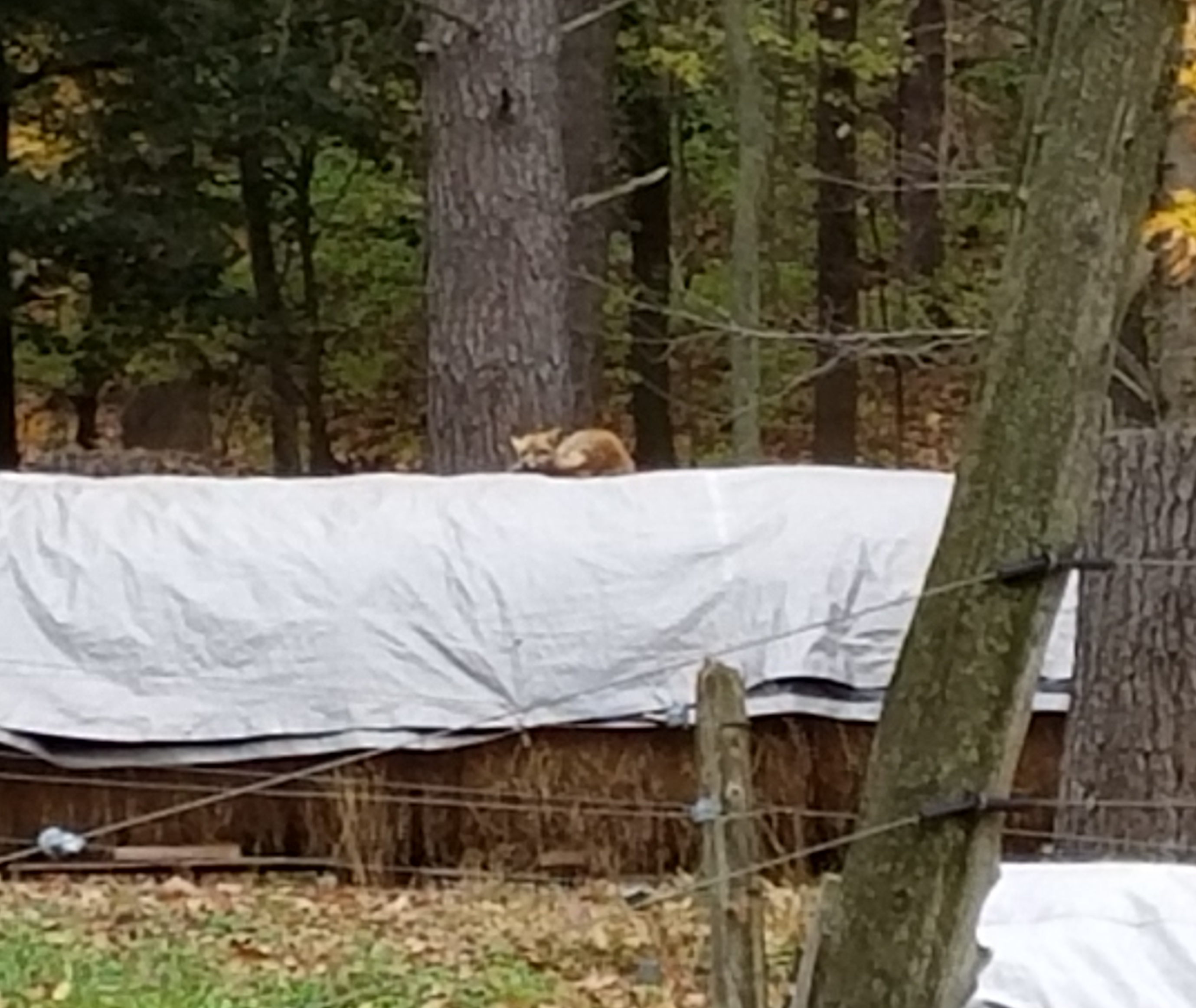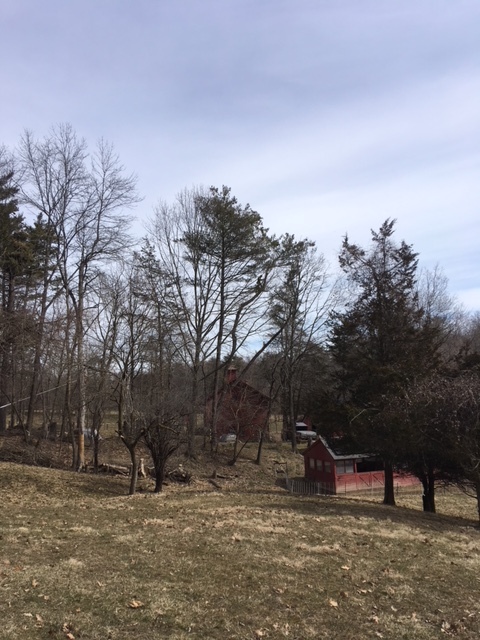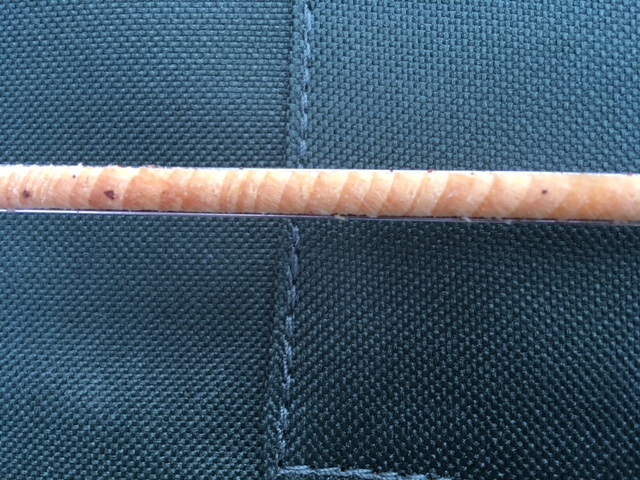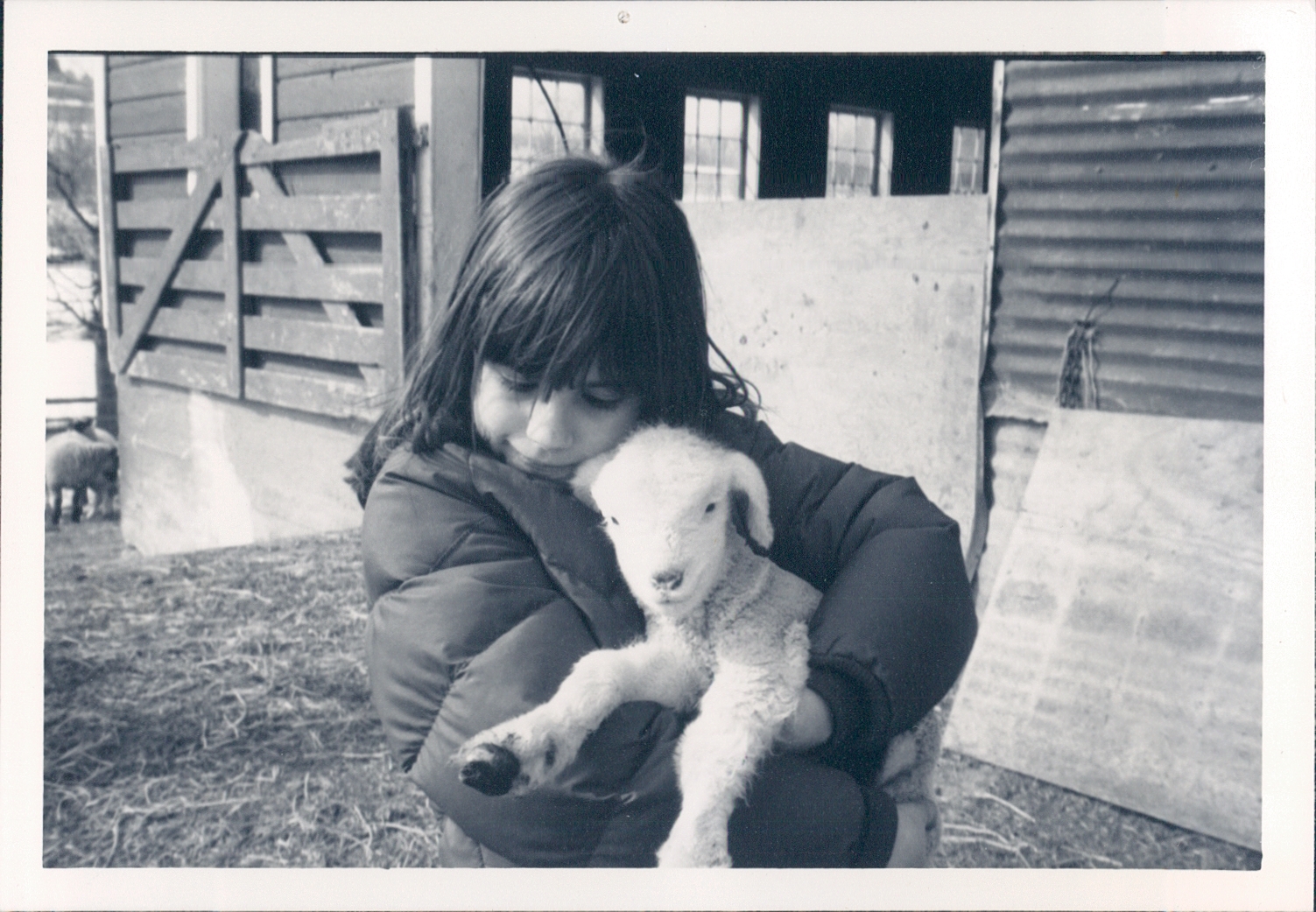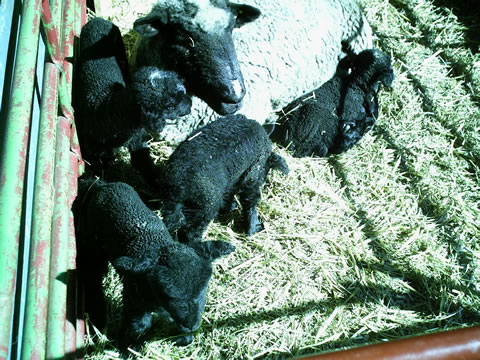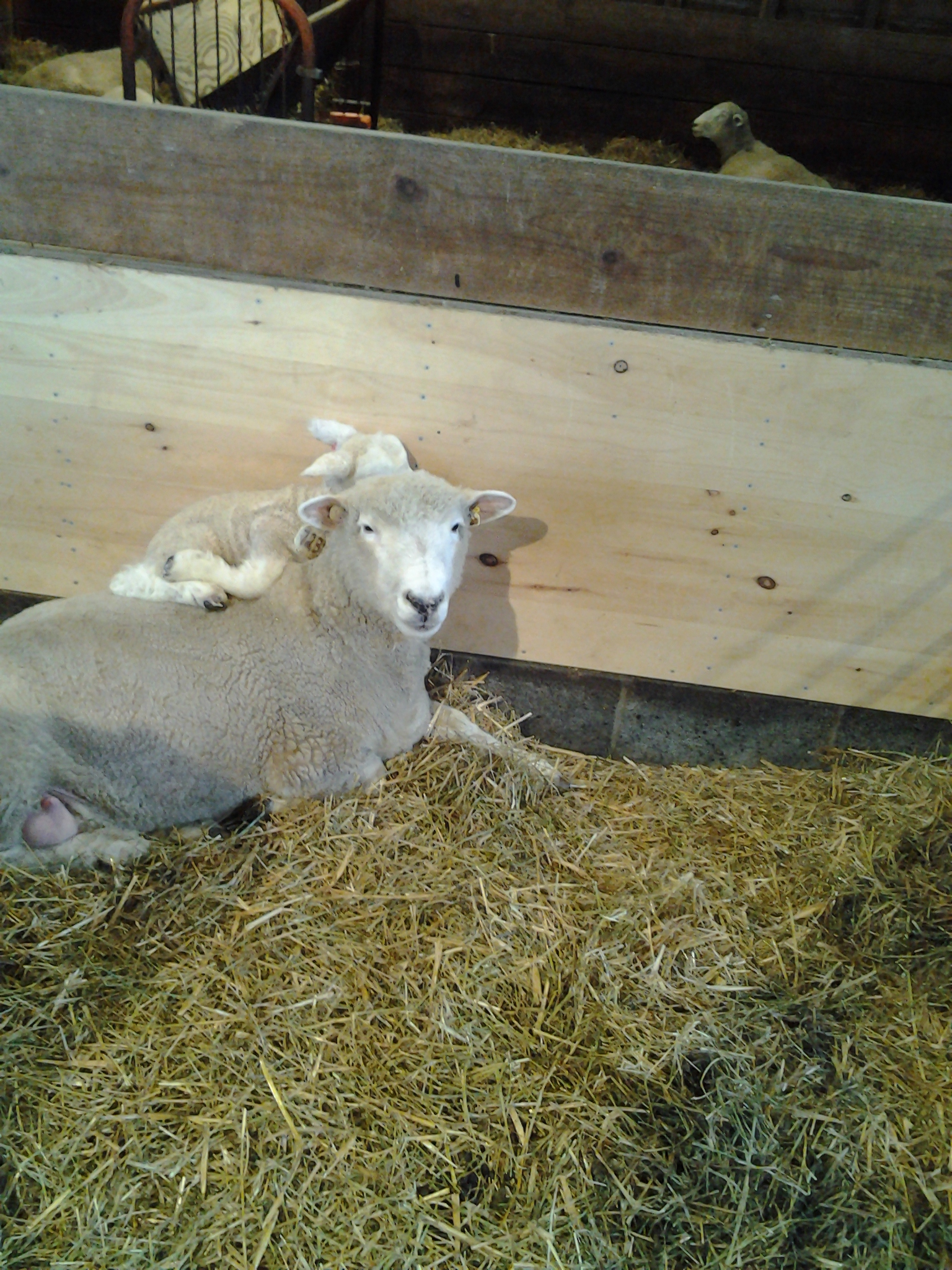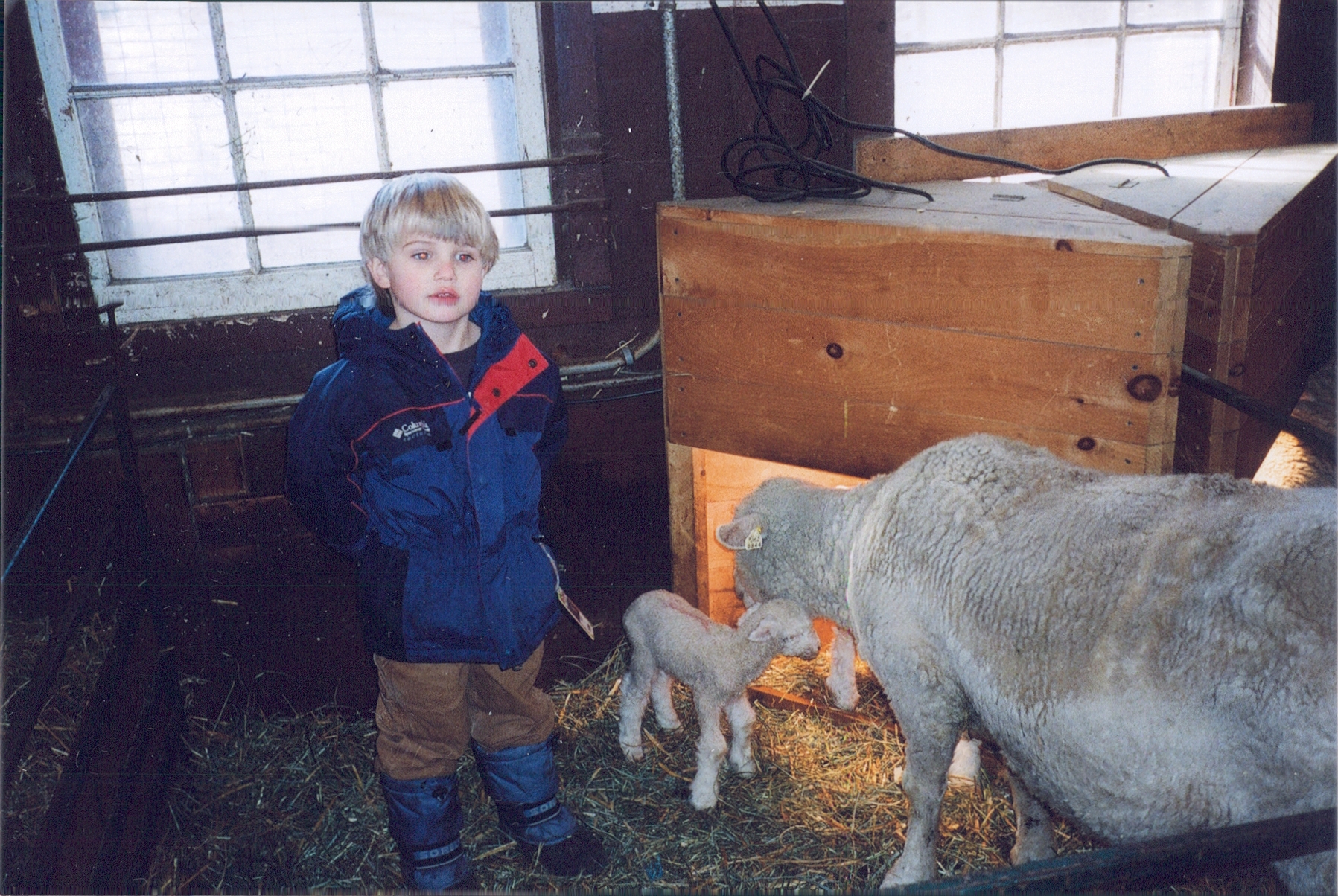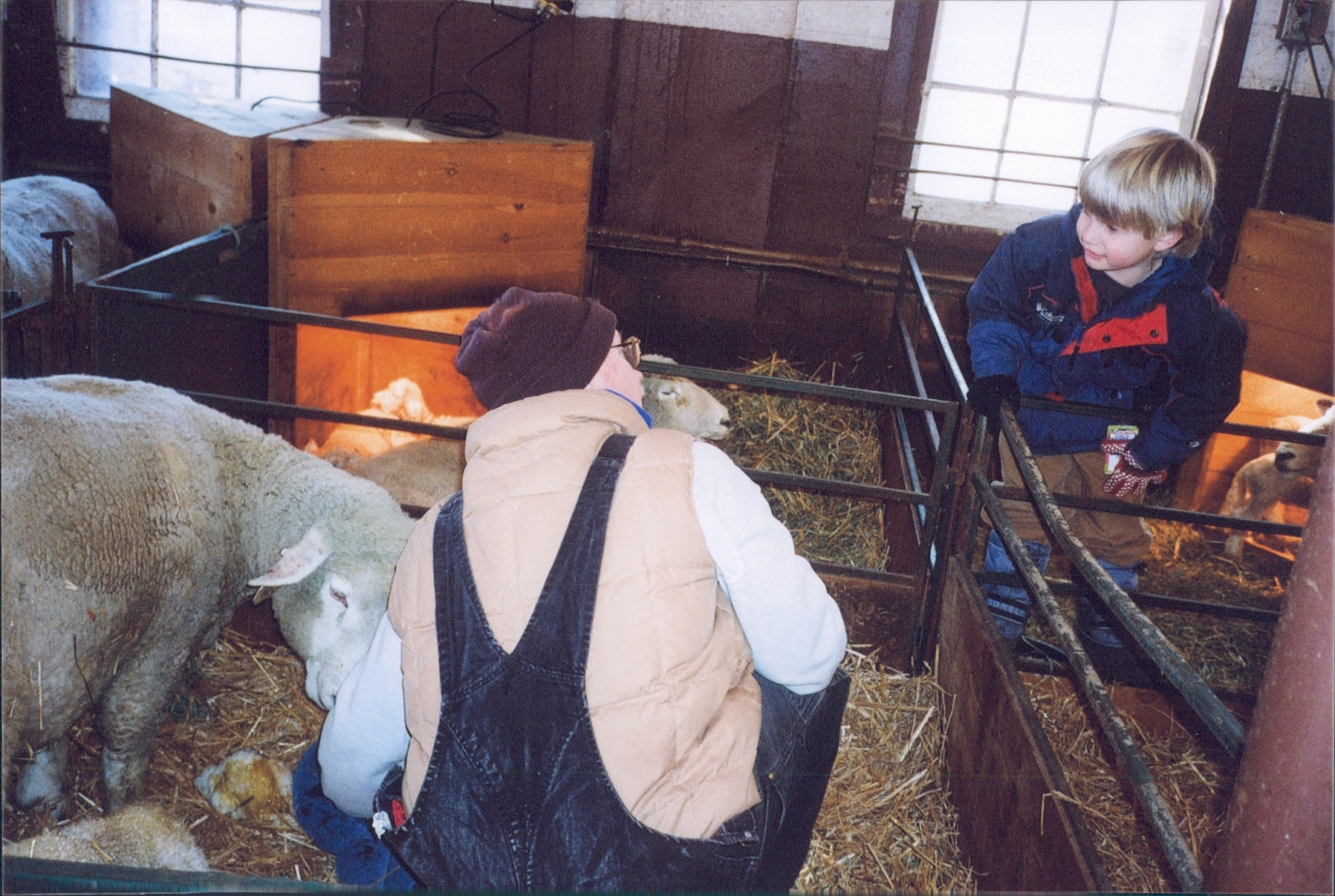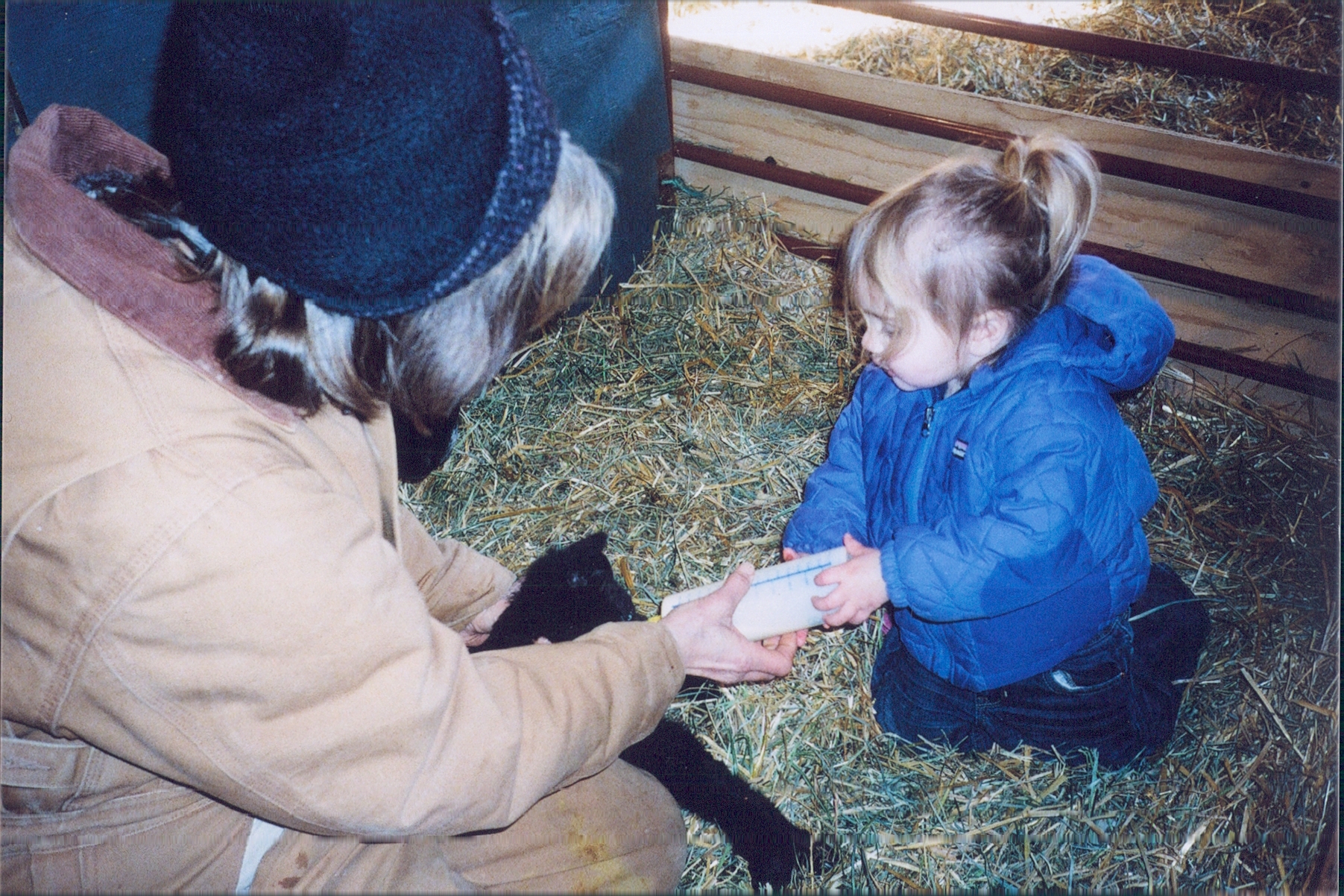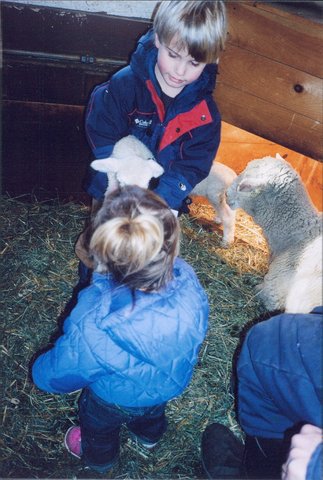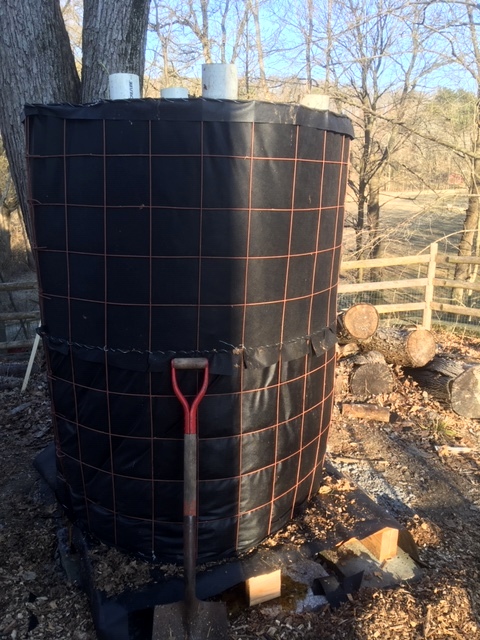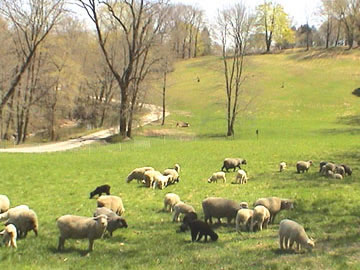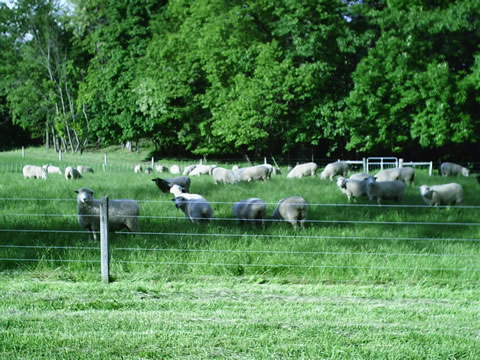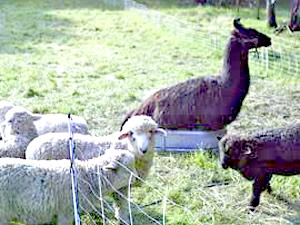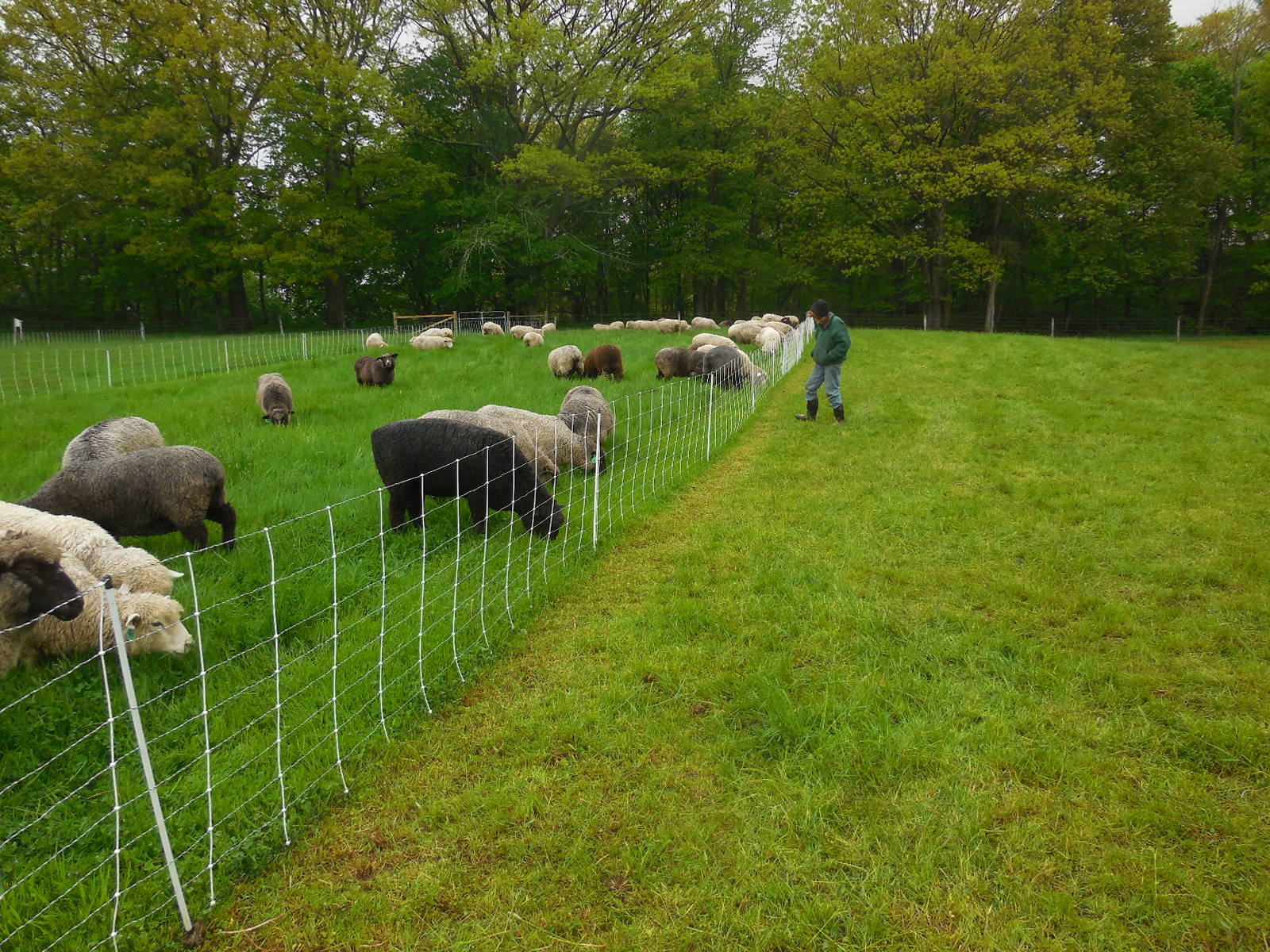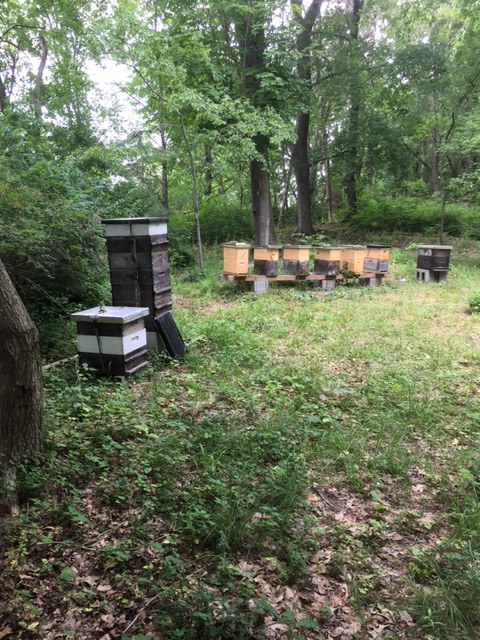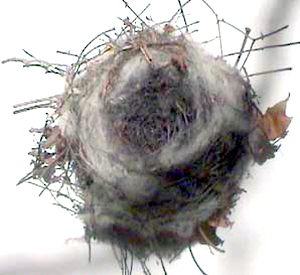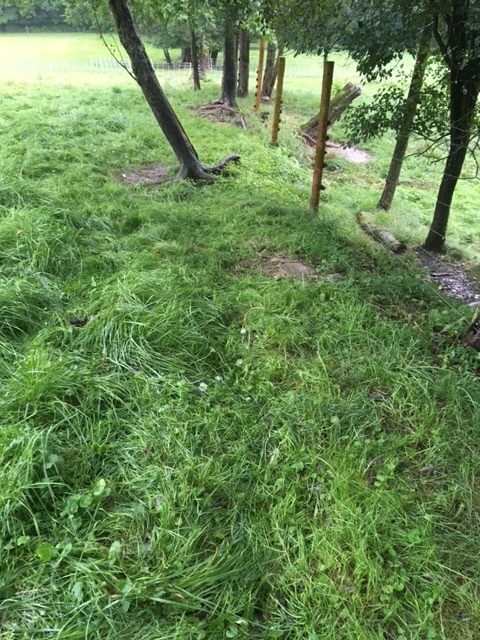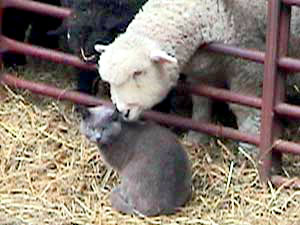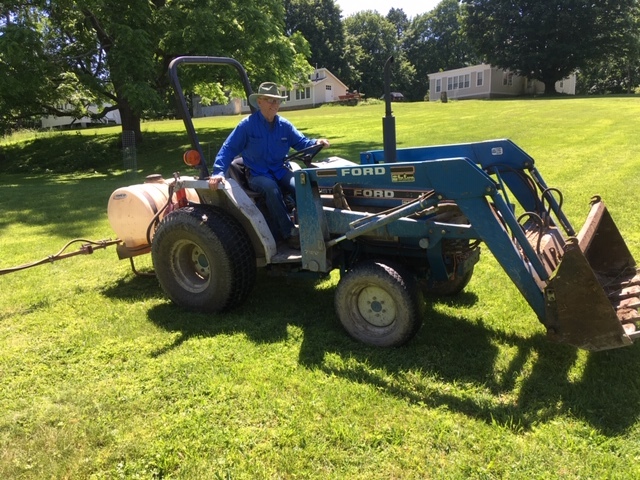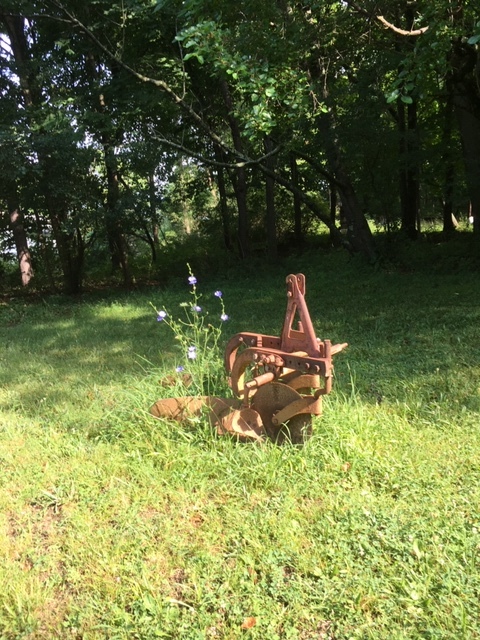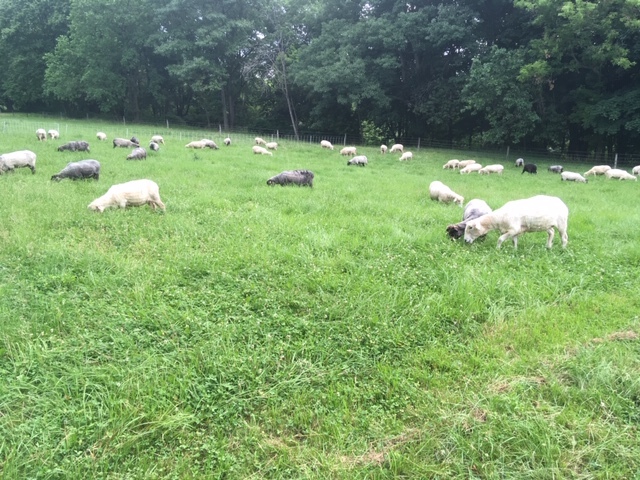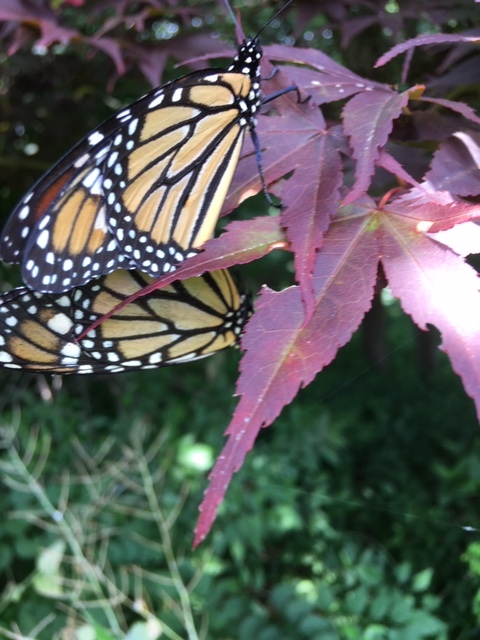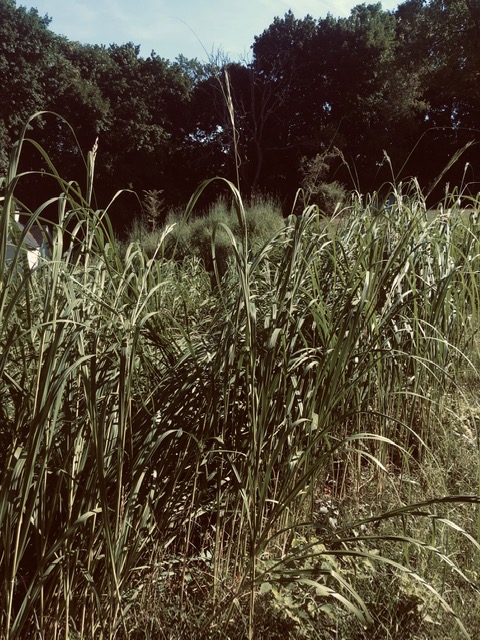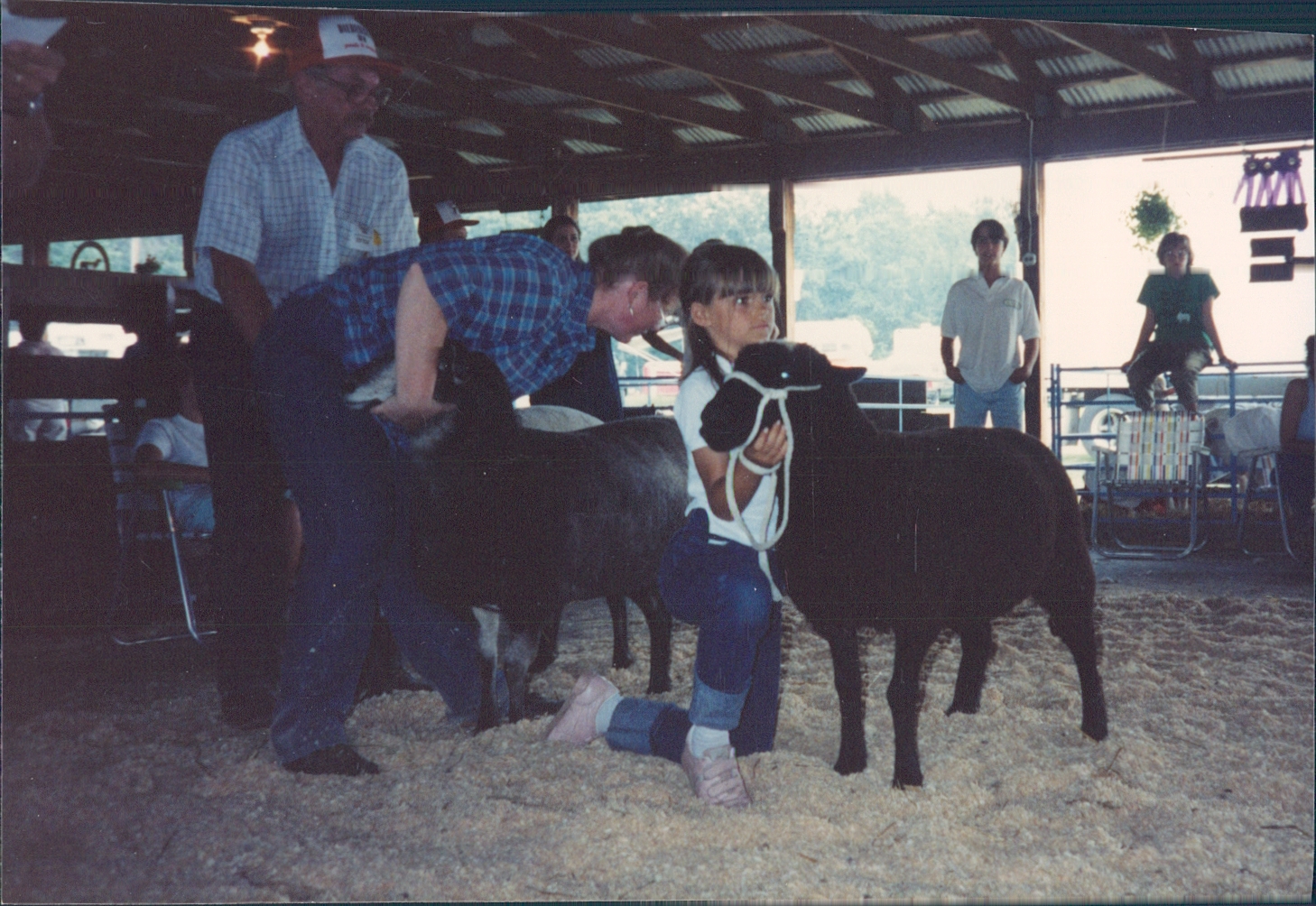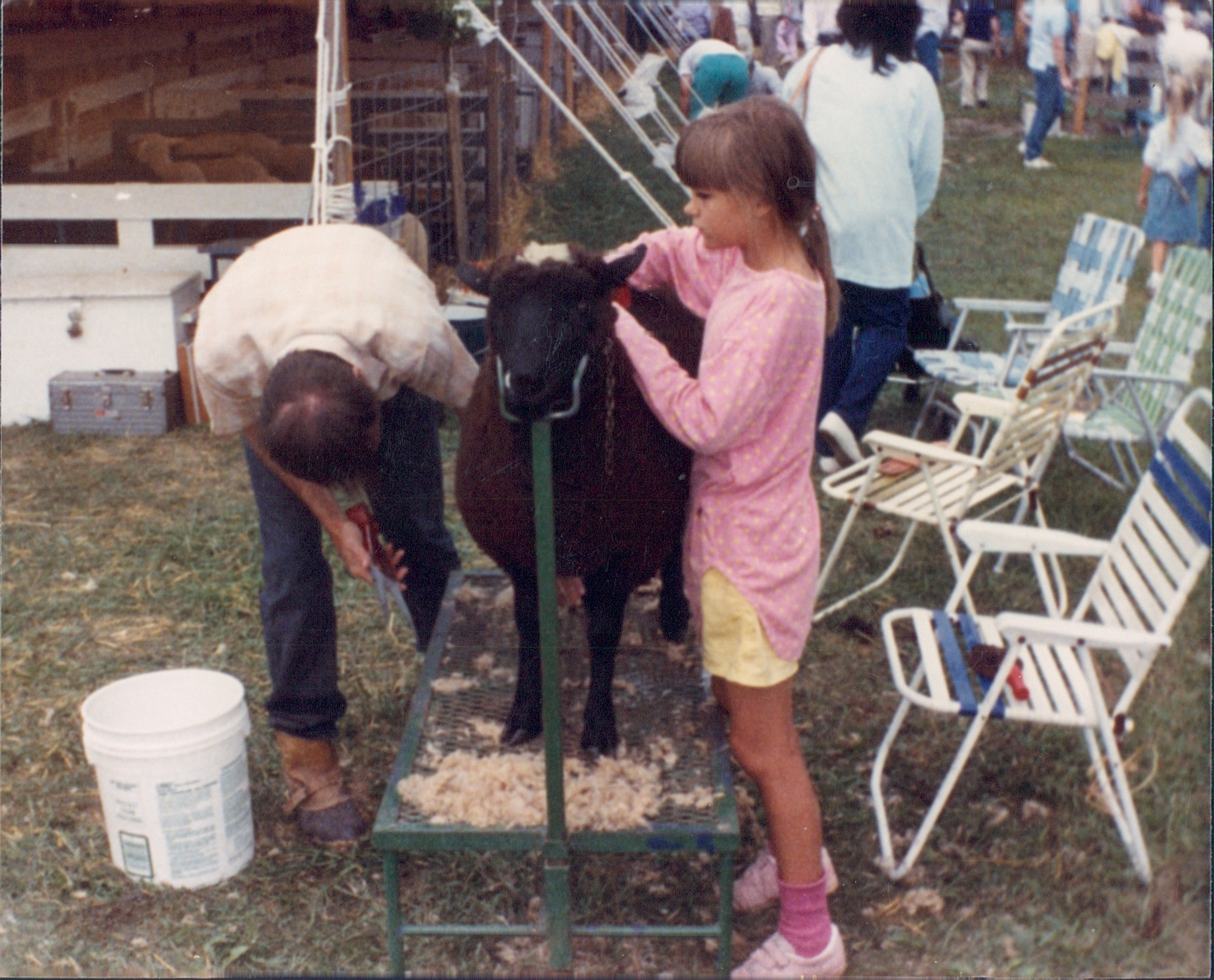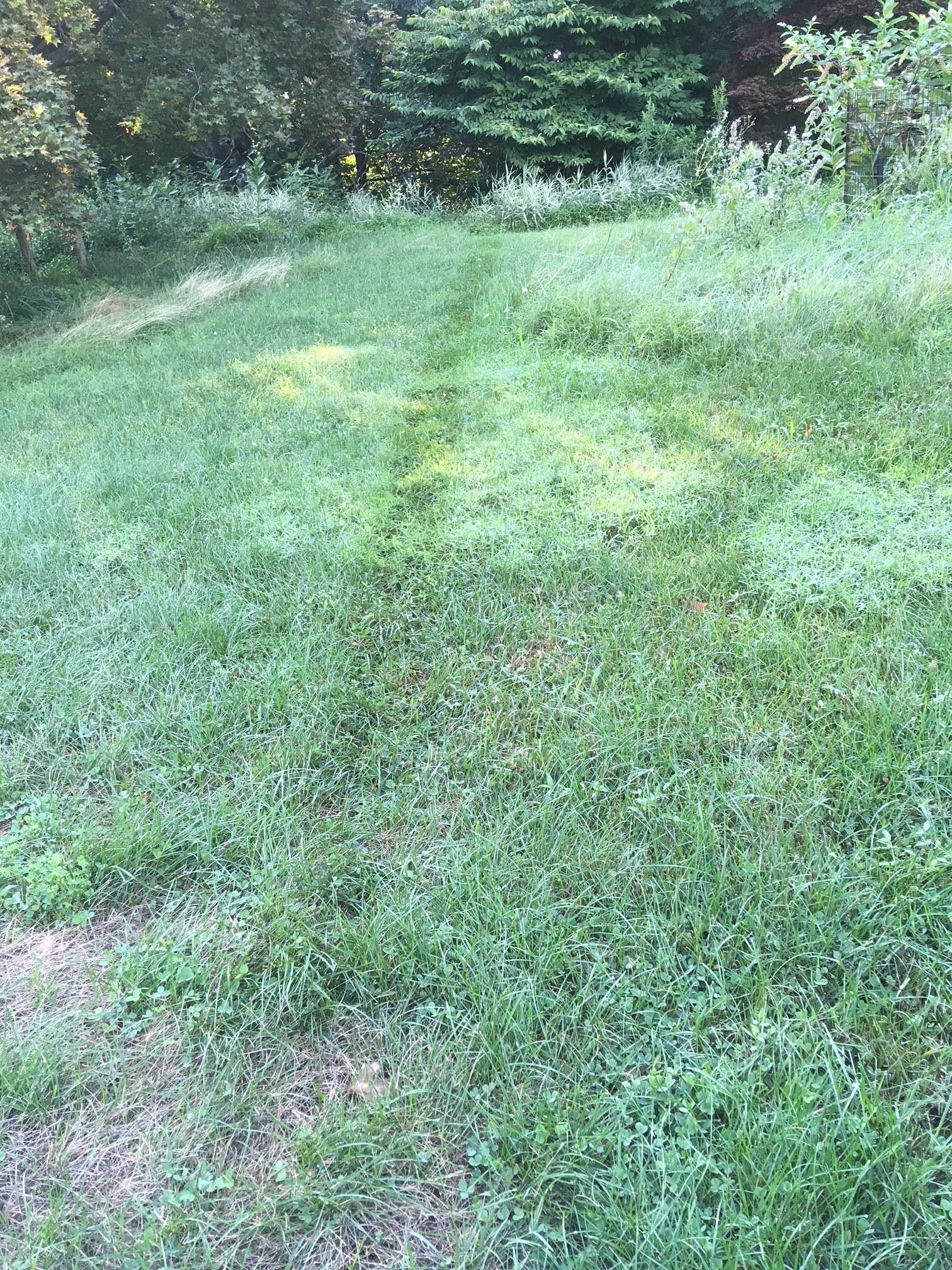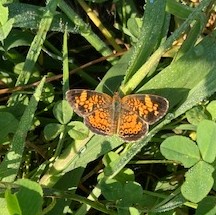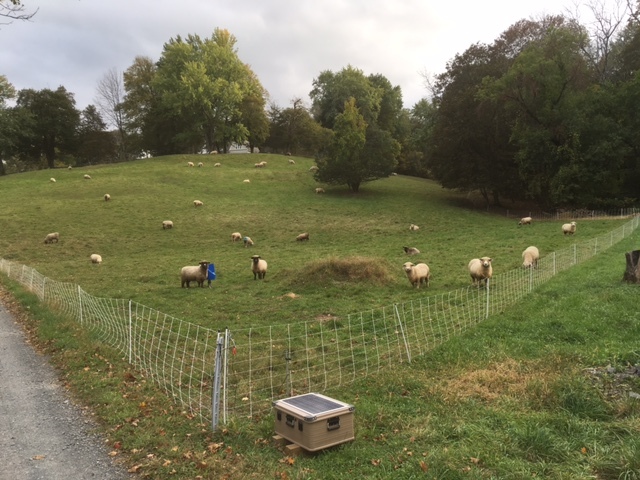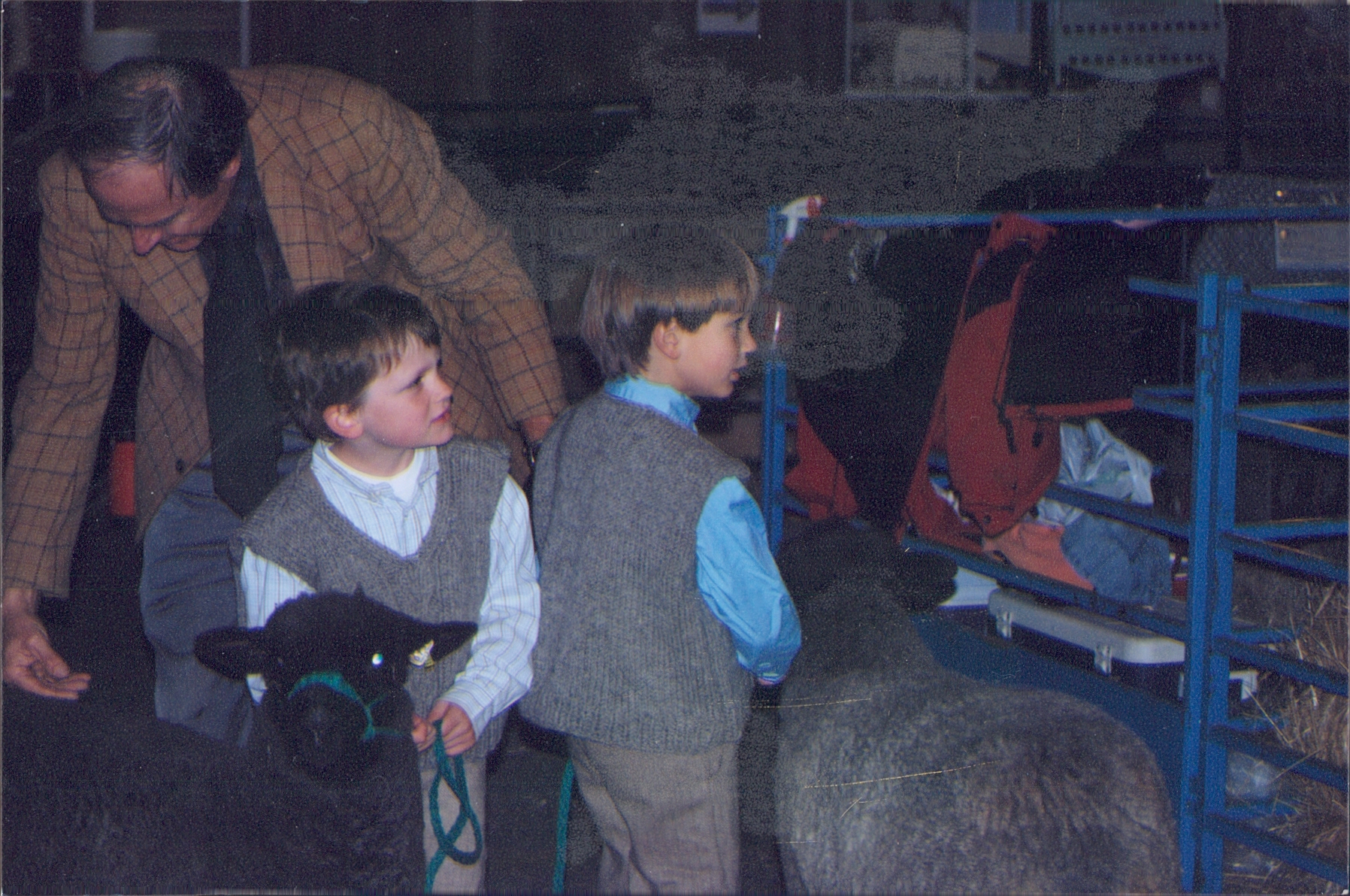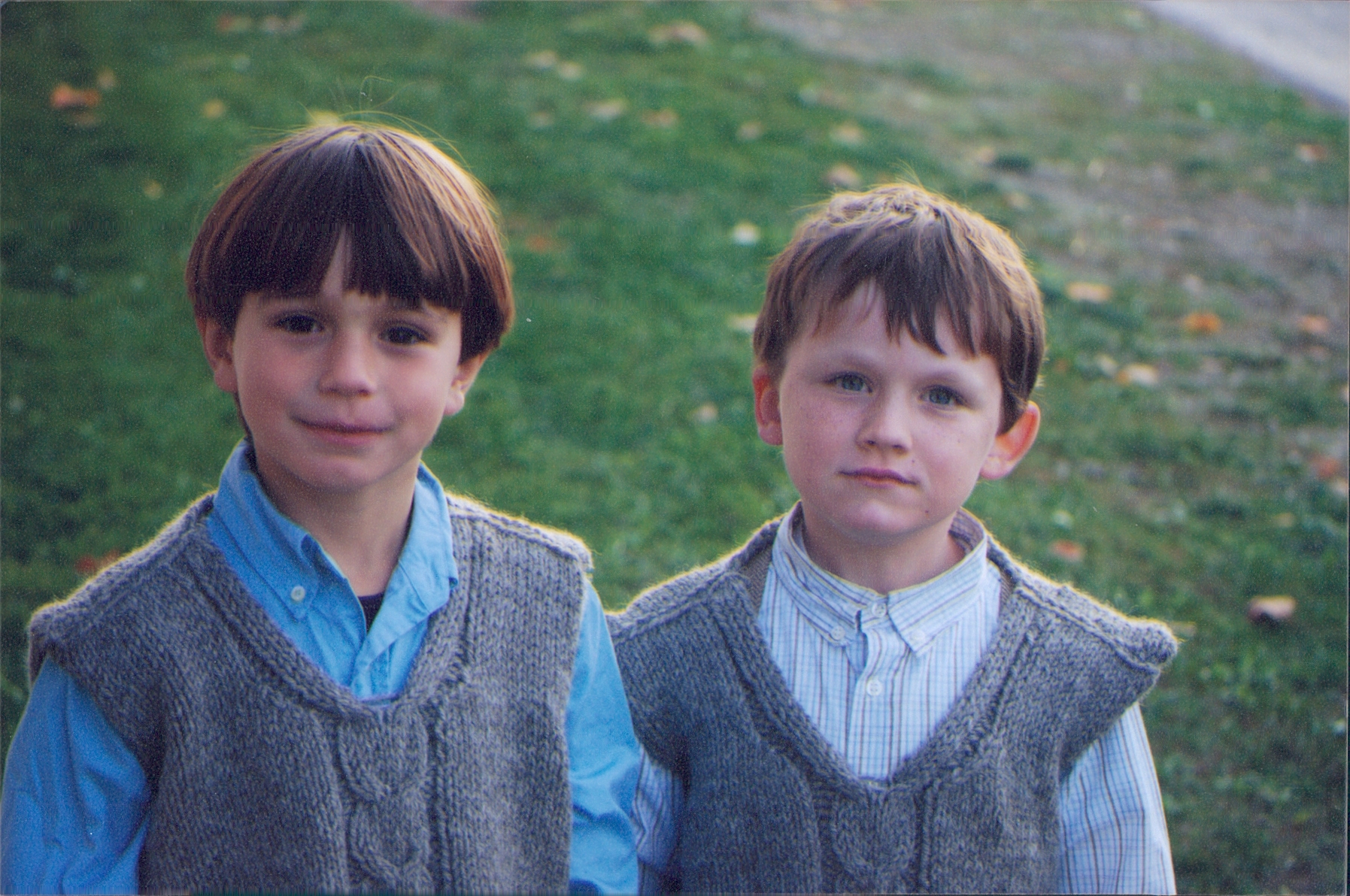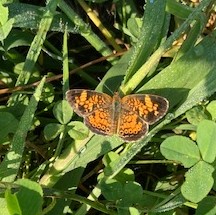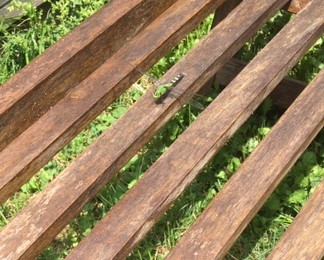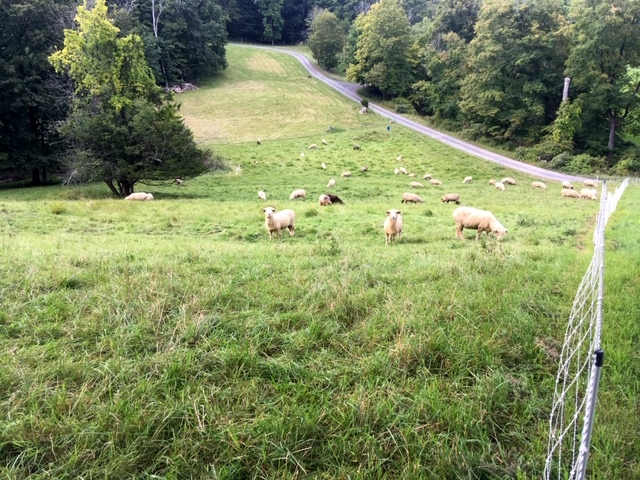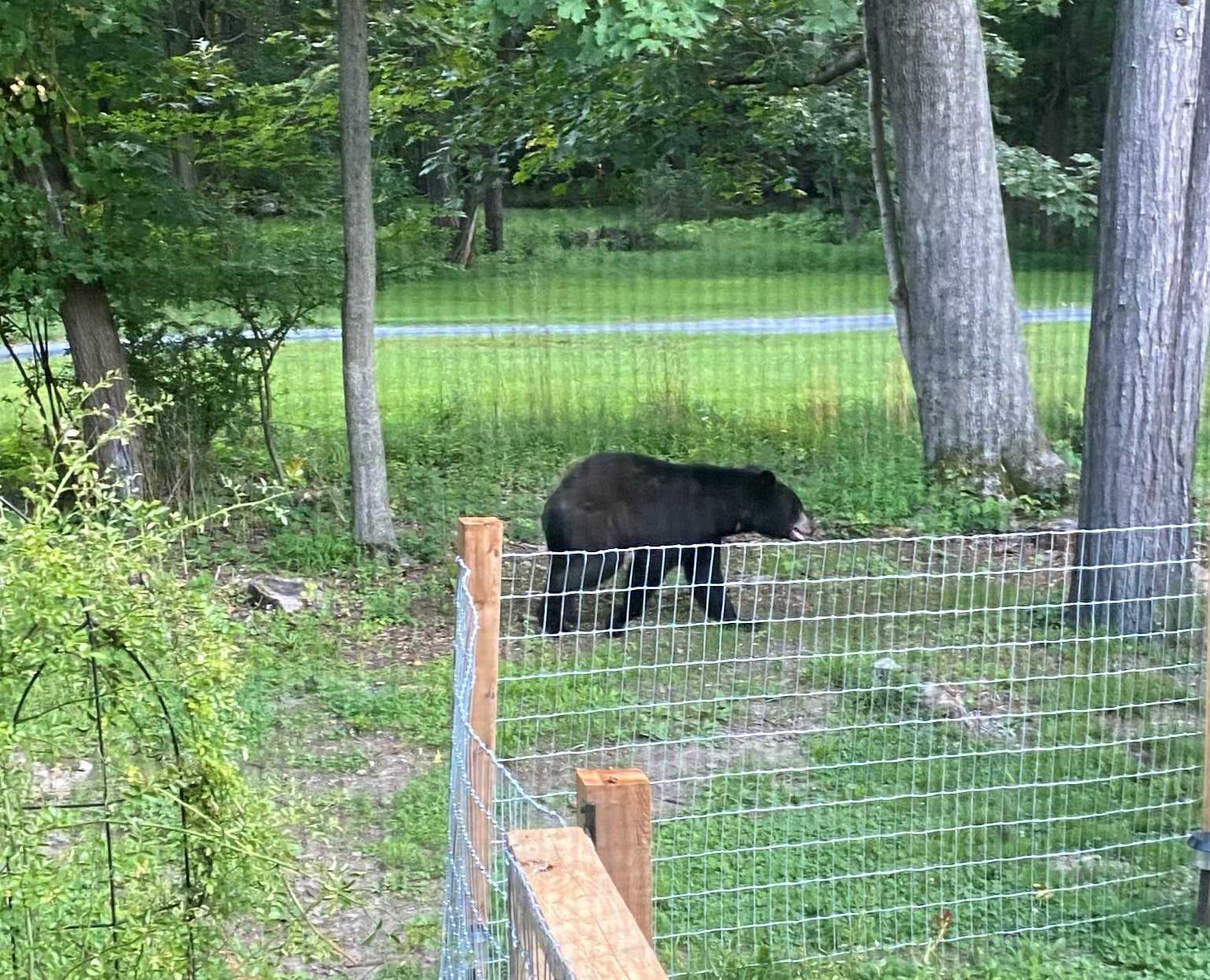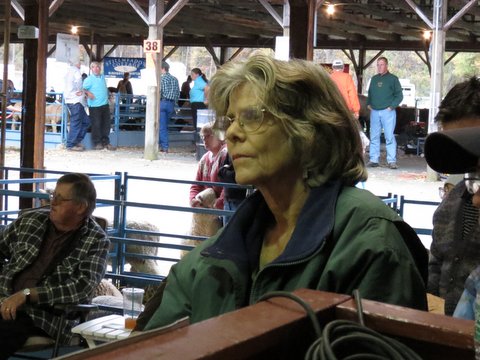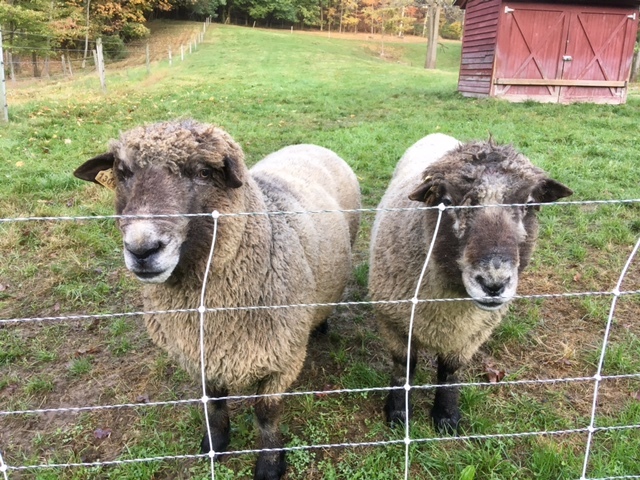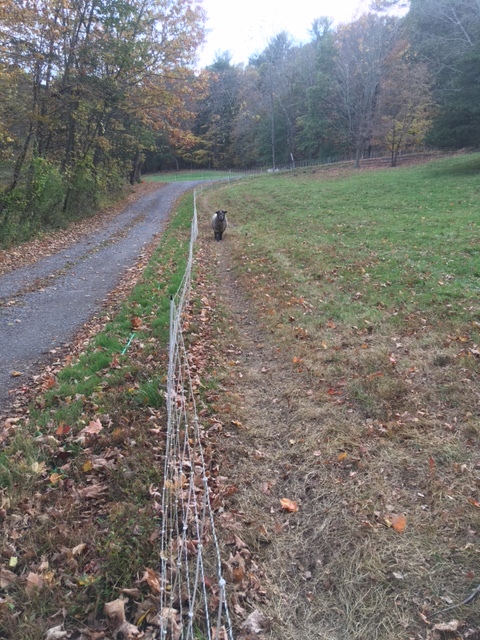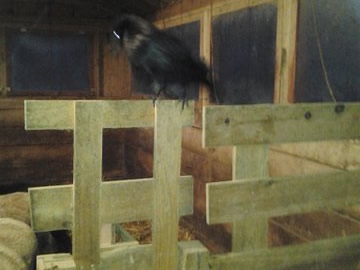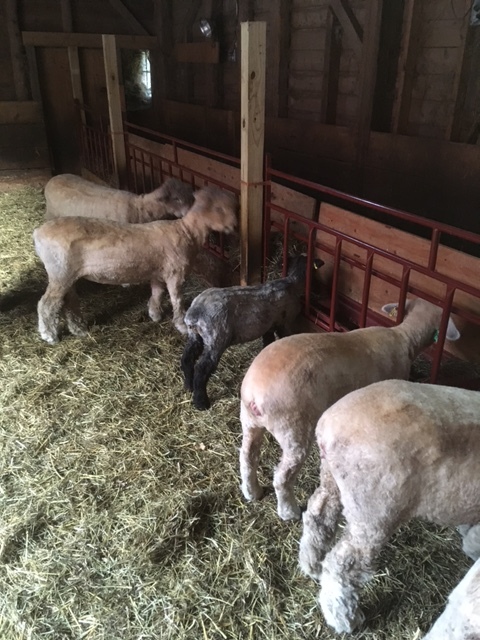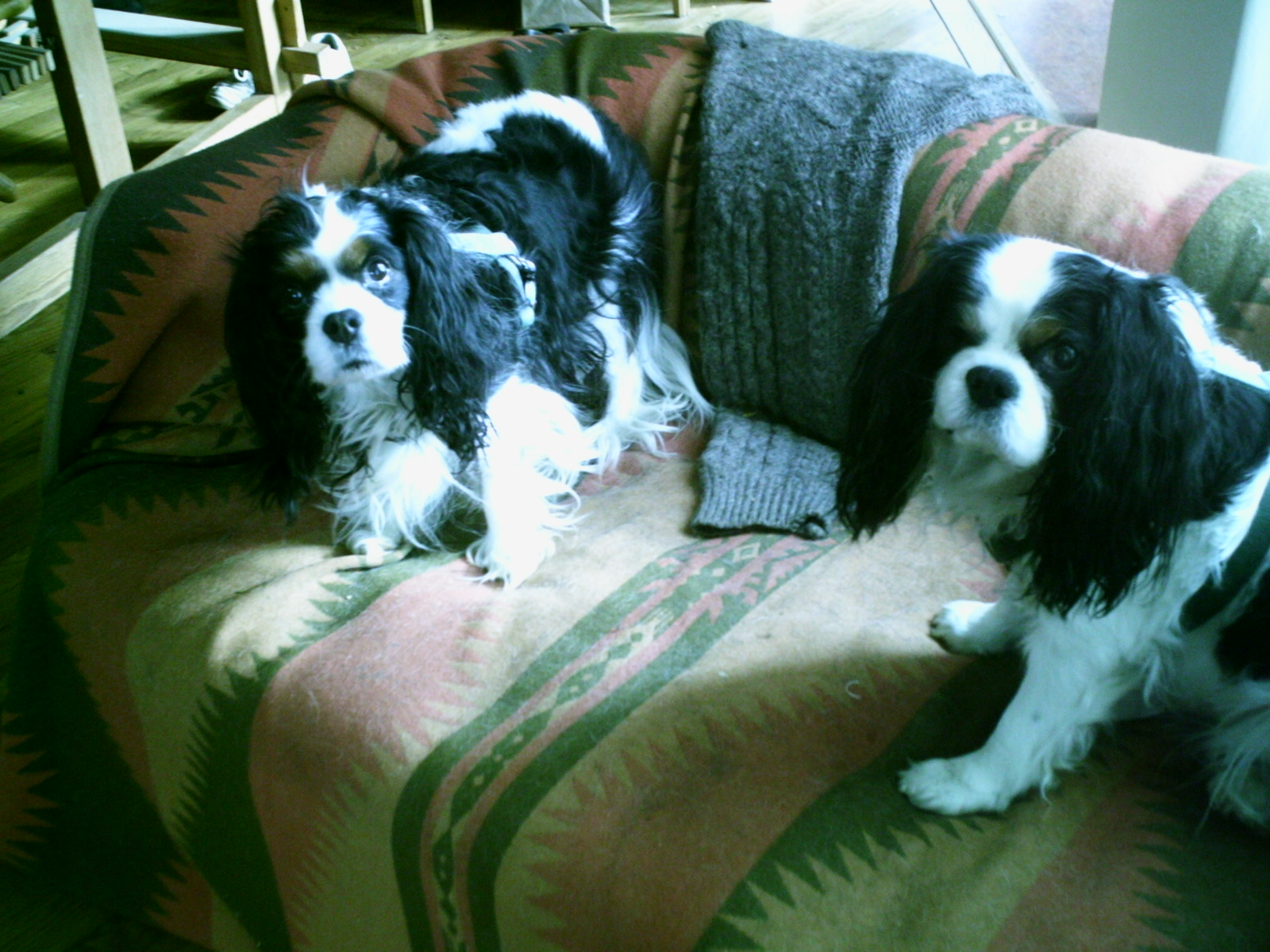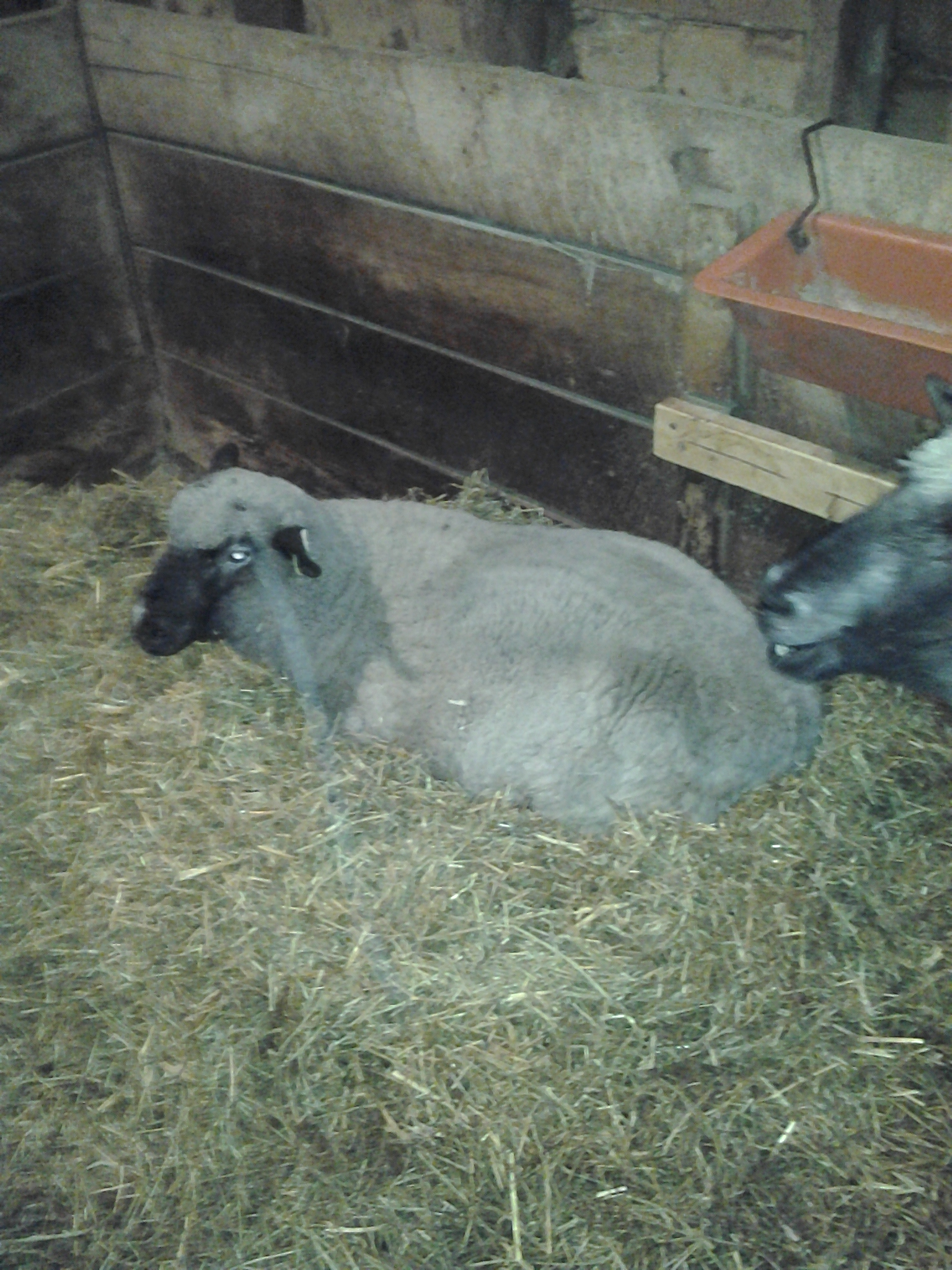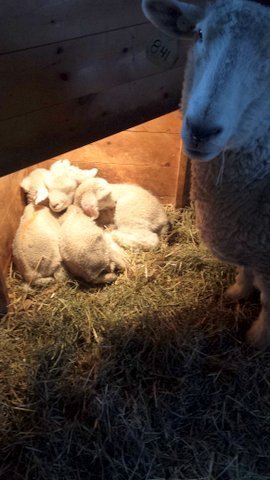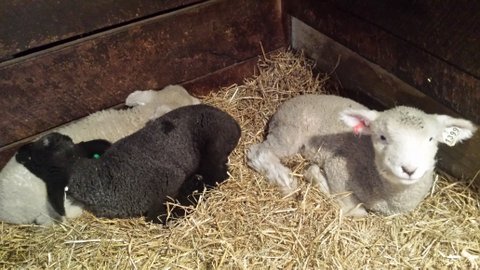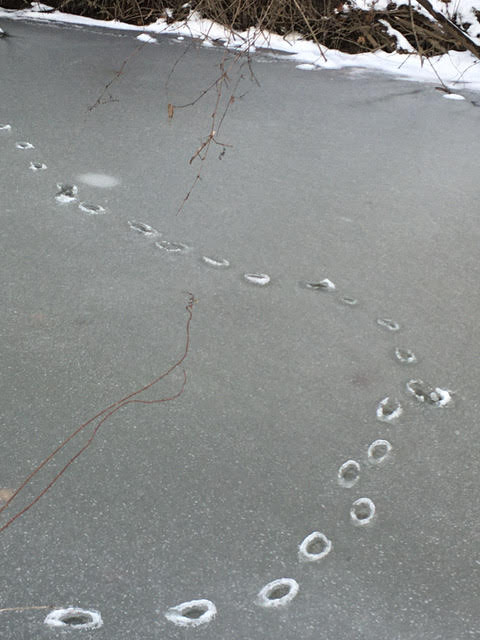Sheep Health
Ups and Downs
In forty years of breeding and raising Romneys we have seen our share of health problems. We have met relatively (thank God) uncommon problems like meningeal worm; copper toxicosis, ; enzootic abortion; caseous lymphadenitis; polioencephalitis; ovine progressive pneumonia; ureteral stone. Of course we’ve dealt all along with endemic issues like neonatal pneumonia; coccidiosis and intestinal parasites; foot scald, weepy eye, pregnancy ketosis, fly strike, soremouth. We’ve had freak accidents like lightning-strike death (just once); electrocution by portable fence (thrice); drowning (once); domestic dog attack (once) ; adjuvant-related seromas (one outbreak after vaccinations) ; and even a lamb who, “pronging” (doing a 90-degree up-leap) hit his head and died instantly. In spring 2022 we had the first-ever notification of liver fluke in some ewes sent to slaughter. This led to our adding valbazen every three months to the worming regimen. These are some of “the thousand natural shocks that flesh is heir to.” We give this list not to say we have solved all these problems yet or ever will, but to point out that for each we have developed preventive and curative measures that are helping. We strive to provide ourselves and our buyers each year with sheep less likely to be harmed by these maladies and to share what we have learned about treatment and prevention with anyone who asks.
Anchorage was one of the few Romney flocks that ever got certified in the Voluntary Scrapie Eradication Program. After a few years in that status, however, we withdrew as the program changed emphasis to focus (so we felt) mostly on preparedness to export ewes. This posed requirements (like brain examination on all sheep dying at the farm) that were reasonable on the part of importing countries fearful of prion diseases but too much demanding on U.S. sheep breeders who don’t plan to export a lot of ewes. Needless to say, we never had any scrapie cases; so far as I know there were no cases in Romneys in the US until much later, when there was a single case at a farm that also had black-faced sheep. That statement about Romneys is not meant to prove resistance, but leans hard against increased susceptibility such as some breeds have.
Stephen was on the Board of National Sheep Improvement Program for four years, during which time we and two other pioneers (the Carlisles and Dee Heinrich) were the only Romney breeders. NSIP is a very good program, but we left it because there were too few Romneys in it in this country to make progress.
We thank the veterinarians who have worked with us in Saugerties at the farm (Dr. Howard Rothstein first, for the last 15 years Pine Plains Veterinary Associates) and Dr Cliff Shipley, University of Illinois Urbana-Champaign. The vets at Pipestone have been a great resource by phone. Dr Isaac Angel, first at Pine Plains then in Stanfordville, took good care of us. Dr Gillian Ferguson, who comes to the farm (praise the Lord) started with us in 2022.
Lambing outcomes summaries 2014-2018
2014 lambing summary (posted in 2015) Rams turned out late August 2013 in four breeding groups. 57 ewes exposed. Three ewes were sold as bred in mid-October; all lambed in 2015 (two had twins, one triplets) In late November an experienced scanner called pregnancy in all 54 ewes still at the farm. One of these developed a big udder but did not lamb.
Fifty-three ewes lambed. Thirty-two ewes (60%) had twins; eleven (21%), singles; ten (19%), triplets. 105 lambs sighted. 51 females and 54 males. Four lambs were born dead. Chlamydia infection was diagnosed after necropsy in the second one, impelling us to treat all ewes pre-partum ewes with injectable tetracycline. Two post neonatal deaths. 99 lambs weaned.
0 % ewe mortality peri-partum or post partum; one ewe died two months after giving birth.
100% of ewes exposed scanned positive or bore lambs.
1.98 average litter size of 53 ewes that lambed at the farm ( a measure of fertility potential)
2.0 average litter size of 56 ewes that lambed at the farm or elsewhere
1.87 average number of lambs weaned from 53 ewes that lambed
1.83 average number of lambs weaned per ewe put to the ram (n = 54)
6/105 lambs (6%) born did not survive to weaning; four of these were stillborn.
Of 101 lambs born alive, only two (2%) died before weaning.
Average birth weight for singletons 15.1 lbs; for twins 11.9; for triplets 10.8
Comments: unprecedented (for us) 100% conception rate, unprecedented fertility potential 1.98 and unprecedented number of lambs weaned from ewes put to the ram (1.83). This was due in part to a program Graeme had started here to combat vibrio and chlamydia infection with vaccination and oral TC, respectively. The second had to be complemented by late stage injections. An usually high number of triplets boosted the average litter size; this may go back to our efforts a few years ago to boost production by encouraging triplets, yet the Wishart trait and the Pinoak lines we had brought in were not in the lineage of all the triplet mothers. We only had this high a proportion of triplets once before, following a breeding season in which all the ewes had been cycled for AI.
The 1.83 ratio was so far above our long-stated yearly objective of 1.6 that we can hardly expect a repeat in the near future but it’s nice to know it can be done.
Note: I wrote most of this in April 2014 meaning to post it and forgot to. It is thus going up at the same time as the 2015 summary in pretty much the same format.
2015 lambing summary (posted June 25 2015)
Rams turned out late August 2014 in four breeding groups. 52 ewes exposed. Three ewes were sold as bred in mid-October; all lambed in 2015. In late November an experienced scanner called pregnancy in all 49 ewes still at the farm. Two did not develop udders and did not lamb. We suspect “missed abortion.”
Forty-seven ewes lambed. First lamb Jan 28, last on March 2. Twenty four ewes (51%) had twins; nineteen (40%) , singles; four (9%), triplets. 79 lambs sighted. 49 females and 30 males. Three lambs were born dead, a triplet coming breech and one twin in each of two pairs. None of these looked like a case of placental failure due to infection. One pre-weaning death at 2 days, one at one week post-natal. Seventy- four lambs weaned.
0 % ewe mortality peri-partum or post partum
100% of ewes exposed scanned positive or bore lambs.
1.68 average litter size of 47 ewes that lambed ( a measure of fertility potential)
1.57 average number of lambs weaned from 47 ewes that lambed
1.51 average number of lambs weaned per ewe put to the ram, below our objective of 1.6. This year the average litter size was much lower than in hard-to-match 2014 when it was 1.98. It’s hard to explain the variations year to year. We may have flushed a little more lightly. Weather is always an imponderable.
5/79 lambs (6%) born did not survive to weaning; three of these never took a breath.
Of 76 lambs born alive, only two (2.6%) died before weaning.
Average birth weight for singletons 14.6 lbs; for twins 11.8; for triplets 10.6
Comments: unsurpassable conception rate for second year in a row and good ewe outcomes. Good lamb survival, good shepherding all around by Graeme.
Our program of treating against vibrio and chlamydia during pregnancy had its first full season in 2014-2015. It seems to have helped prevent late abortions and stillbirths due to infection, which were a big problem before the 2014 lambing. We also give every newborn lamb a shot of biomycin to prevent Pasteurella pneumonia.
2016 lambing summary (posted 7 Oct 2016)
Rams turned out late August 2015 52 ewes exposed. Three ewes were sold as bred in mid-October; all lambed in 2016. In late November an experienced scanner called pregnancy in 48/49 ewes still at the farm. One of the 48 did not develop an udder and did not lamb. We suspect “missed abortion.” Two ewes died very suddenly in late pregnancy with no signs if illness.
Forty-five ewes lambed. First lamb Jan 22, last on March 7. Twenty eight ewes (62 %) twinned; thirteen (29%) had singletons; four(9% ) had triplets.
81 lambs sighted, 43 females and 38 males. Four lambs were born dead. All 77 liveborns survived to weaning.
0 % ewe mortality intra-partum or post partum but 4% counting two deaths in late pregnancy before labor.
96% of ewes exposed carried to near term or term..
1.8 average litter size of 45 ewes that lambed ( a measure of fertility potential)
1.71 average number of lambs weaned from 45 ewes that lambed
1.57 average number of lambs weaned per ewe put to the ram, just below our objective of 1.6.
4/81 lambs (5%) born did not survive to weaning; none of these never took a breath as far as we can tell.
Average birth weight for singletons 13.5 lbs (range 12.19) ; for twins 12.2; for triplets 12.2 (10, 14.5)
Comments: good conception rate for third year in a row. Good lamb survival, good shepherding all around by Graeme.
Our program of treating against vibrio and chlamydia during pregnancy had its second season in 2015-2016. It seems to have helped prevent late abortions and stillbirths due to infection, which were a big problem before the 2014 lambing. We also give every newborn lamb a shot of biomycin to prevent Pasteurella pneumonia.
2017 lambing summary (posted June 5 2017 ) 52 ewes were exposed, of which twelve left the farm exposed and forty stayed home. DNL = did not lamb
Stayed 40 Moved 12 Total 52
DNL 5 Lambed 35 DNL 2 Lambed 10 DNL 7 Lambed 45
# lambs 66 # lambs 16 # lambs 82
Among 45 ewes who lambed, 14 (31%) had a single, 22 (49%) twins and 9 (20%) triplets
At home, 64 lambs were weaned; one of 66 was born dead fully formed and one died at age 1 month. No maternal mortality.
M:F ratio in lambs born at home 37/29 = 1.27 proportion M = 37/66 = 0.56
Prolificacy of ewes that conceived and stayed home 66/35 =1.89
Prolificacy of ewes that moved away bred 16/10 = 1.6
Prolificacy of all ewes that conceived 82/45 = 1.82
Lambs weaned at home/ewes that lambed at home 64/35 = 1.83
Lambs weaned at home/ewes exposed that stayed here = 1.6. This is the bottom line of production efficiency.
Comment : good prolificacy, good lamb survival and good maternal survival. The bottom line was pulled down by five ewes that did not lamb but met our yearly objective for this statistic (see home page objectives). We could not distinguish between failure to conceive and unrecognized abortion. We did not scan 2016. but probably will in 2017. Where failure to conceive occurred, we can’t now sort out ram from ewe factor.
2018 lambing summary (posted Aug 3 2018 ) 45 ewes were exposed starting in mid-August, of which three left the farm exposed and forty-two stayed home. Lambing started on 21 Jan . The next-to last lamb was born 25 Feb and the last on March 13. 71 lambs were born to 41 ewes. Fourteen ewes (34%) had a singleton, 24 had twins and three had triplets. The ratio of lambs born to ewes delivering was 1.74. lower than we sometimes have. One ewe of 42 put to the ram did not lamb. We followed up to learn that all the ewes who had left us in 2017 as marked by a ram did indeed lamb. DNL below = Did not Lamb
Stayed 42 Moved 3 Total 45
DNL 1 Lambed 41 DNL 0 Lambed 3 DNL 1 Lambed 44
# lambs 71 # lambs 5 # lambs 76
Reporting on births at our farm among 41 ewes who lambed, 14 (34%) had a single, 23 (59%) twins and 3 (7%) triplets
At home, 68/71 lambs were weaned; of the three losses before weaning, two were at six days of age; no maternal mortality. The denominator includes five lambs that went as bottle babies before 60 days of age.
M:F proportion M = 32/71 = 0.45
Prolificacy of ewes that conceived and stayed home 71/40 =1.78
Prolificacy of ewes that moved away bred 5/3 – 1.67 (note I have to check this figure drawn from memory)
Prolificacy of all ewes that conceived 76/44 = 1.73
Lambs weaned at home/ewes that lambed at home 68/41 = 1.66 Comment: not quite as high as last year.
Lambs weaned at home/ewes exposed that stayed here = 1.62 This figure is the bottom line of production efficiency. Comment: 1.62 is a little better than any of the preceding three years, which were all slightly below our stated objective of 1.6.
Since we breed for “white” and for “extension dominant colored” and for “recessively colored,” here are relevant facts about color types.
Matings of white ram Chqapin 145 (Awt A_ ) with white ewes thought not to be “color carriers” and thus denoted as Awt A_ produced 30 white lambs. The same ram used on “extension dominant” natural-colored ewes that we conservatively call A_ A_ Ed E_ produced 8 natural-colored lambs and 7 whites. The proposed allelotype for the natural-colored lambs would be A_A_Ed E_. For the white lambs it would be Awt A_ E+ E+. In past years we have always used an extension dominant ram on ewes thought to have their color from extension; this year we did not have such a ram. having concentrated on recessive rams.
In table format, there are eight possible unions between two allelotypes of ram that we used in 2017 and four allelotypes of ewes. The distribution of unions is shown schematically in table 1
| Ewe allotype | shorthand | Ram Aw A_ | Ram Ax Ay |
| Awt A_ E+ E+ | “white” | A | E |
| A_A_Ed E_ | “ext dom color” | B | F |
| Awt Ax E+ E+ | “white color carrier” | C | G |
| Ax Ay E+ E+ | “recessive color” | D | H |
The number of unions in each letter-coded cell is shown in table 2 below with the distribution of lamb allelotypes resulting from each type of union,
| Union | number | no. lambs | no. lambs | no. lambs | no. lambs | total no. |
| type | of type | Awt A_ E+ E+ | A_ A_ Ed E+ | Awt Ax E+ E+ | Axt Ay E+ E+ | lambs |
| “white” | “ext dom[inant] | “white color | “recessive | |||
| color” | carrier” | color” | ||||
| A | 18 | 30 | 0 | 0 | 0 | 30 |
| B | 9 | 7 | 8 | 0 | 0 | 15 |
| C | 0 | 0 | ||||
| D | 0 | 0 | ||||
| E | 2 | 0 | 0 | 4 | 0 | 4 |
| F | 0 | 0 | ||||
| G | 7 | 9 | 5 | 14 | ||
| H | 5 | 0 | 0 | 0 | 8 | 8 |
| tot | 41 | 37 | 8 | 13 | 13 | 71 |
As is my wont, more precise definitions and explanations for the COGNOSAG terminology are below for those with a taste for such.
“Allelotype” refers in this context only to the alleles at the agouti locus (for example Awt , Ax where Ax means any non-wt allele at agouti such as light blue) and at the extension locus where only two alleles are known, Ed the dominant and E+ that does not confer color.
All allelotypes listed are educated guesses, are not based on DNA.
We believe that a high proportion (>95%) of our white ewes that have no known recessive color in their ancestry are Awt Awt, but denote them anyway as Awt A_ because if one allele is Awt that makes all other alleles at agouti either imperceptible or every subtle. We think we can now recognize Awt Aa through recent experience and pencil that sheep thus.
Since Ed obscures the expression of all alleles at agouti we have taken to calling sheep that got color at extension A_A_ Ed E_ even when we know that several generations of the “white” side have been white. It would be safe I think to write Awt A_ Ed E_ or even Awt A_ Ed E+ but were prefer to be conservative.
We are certain that we no longer have any sheep that are double dominant at extension Ed Ed; nonetheless to spread caution to others we write Ed E_ because there is no way by looking to tell an Ed sheep from an Ed Ed one.
The outcomes above indicate that we are moving stepwise to emphasize recessive color without abandoning extension dominant. This is frankly risky as a marketing gambit; we think it is good for the Romney breed. The recessive sheep (ask Graeme) have distinctive strengths of hardiness, temperament, good mothering, muscling, fleece weight and variations in fleece hue that can compensate for the main charge against them: not big enough to show in he big time. Whether the compensation is enough depends on one’s wish to flourish in that arena.a
2019 lambing summary posted July 31 2019
42 ewes put to ram. All stayed here. Full term births sighted in 41. Graeme suspected one ewe had aborted early on.
83 lambs from 42 ewes put to ram = 1.98 Some call this “lambing percentage,” but we don’t
83 from 41 ewes that surely conceived = 2.02 . Some call this “lambing percentage;” we don’t.
It could be called average litter size from ewes with term births.
The statistic that we choose is number lambs weaned /number ewes put to ram. We get there like this:
4/83 lambs born dead (3 were triplets, two being from one set on 1398) leaves 79 born alive. Two of the 79 were likely born alive but were found dead several hours later hidden behind, a feeder untouched by first- time dam
77/83 lived past 24 hours. Two died after that before weaning. Total weaned = 75/83 (67 here and 8 (all triplets) who had gone as bottle babies to a family in Tivoli NY)
75 lambs weaned/42 ewes put to ram = 1.79. This is the second-best ratio we have ever had, the best having been 1.83 in 2014. The last four years 2015-2018 were 1.51, 1.57,1.6 and 1.62 in series. Note, however, that this ratio is higher always than it might be if we counted only lambs weaned from dams, not bottle babies. The most rigorous numerator would exclude bottle babies.
No maternal mortality.
Of the 83 lambs males were 46, females 37.
Birth types were in 41 litters: 10 (24%) singletons, 20 (49%) twins and 11 (27%) triplets
Distribution of lambs by birth type and color (white vs not-white) 2019
|
unions |
single |
twins |
trip |
total |
wh |
not-wh |
expected |
|||
|
not-white |
||||||||||
|
1 |
wh by wh |
15 |
4 |
14 |
12 |
30 |
28 |
2 |
0 |
* |
|
2 |
xD by xD |
8 |
2 |
6 |
9 |
17 |
0 |
17 |
13 |
** |
|
3 |
rec by rec |
10 |
3 |
10 |
6 |
19 |
0 |
19 |
19 |
|
|
4 |
rec by WCC |
7 |
1 |
8 |
6 |
15 |
8 |
7 |
7.5 |
|
|
5 |
rec by wh |
1 |
0 |
2 |
0 |
2 |
2 |
0 |
0 |
|
|
6 |
col. total |
41 |
10 |
40 |
33 |
83 |
38 |
45 |
||
Legend wh means phenotypically white no indication of color genes in registration number
Awt A_ E+ E+
xD extension dominant A_A_Ed E_
rec colored sheep with two color alleles at agouti Ax Ay E+ E+
WCC white color carrier looks white known by parentage or offspring to have one color allele at agouti locus Awt Ax E+ E+
Distribution by allelotype
White Awt A_ E+ E+ 26
WCC Awt Ax E+ E+ 12
Recessive Ax Ay E+ E+ 28
Xdom A_A_ E+ E_ 17
Total 83
Comments two “white by white” unions left a surprise recessive lamb. Certain of paternity, we concluded that all four sheep were unrecognized color carriers. There was consanguinity in both unions. We had a good idea of where the color gene might have come from for 3 of the sheep going back to Culver lines. In the fourth one (145) no clue and the pedigree only went back 4 gen.
We re-registered as bw all progeny of 145 sold to other farms or kept here, but we did not re-register 145 himself. He was culled for reasons besides being bw: always seemed thin and had an unhealing sore on his brisket. He was a nice ram and did well for us all years we had him.
These surprises remind us that unrecognized color carriers are not a rarity. I have guesstimated in the past that in America the prevalence is 5 – 10% but that was based on the unrealistic assumption of no consanguinity. The estimate would be lower if all unions that leave a surprise were non-consanguineous. I’m assuming that many such are in fact consanguineous.
In flocks that discriminate against recessive color an agouti color allele can be passed down the line for generations un-noticed. The only way to spot it is to put a ram where it’s under consideration to five or six known color carriers. If none of the resulting eight or ten lambs is colored, it’s pretty likely the ram is not a color carrier but not ruled out completely. No flock that discriminates against recessive color, however, is apt to have a bunch of white color carrier ewes; so, this is not a practical test. Editorializing, it is vital that when a previously unrecognized white color carrier is identified the breeder make a big effort to notify everyone he or she knows who might have that line and to re-register the particular sheep as bw even if the pedigree shows no b as far back as it goes.
It is likely that ram 1486 is Ed Ed , as the probability of 17 colored lambs in a row from a union of two sheep Ed E+ is 0.75 E+17 = 0.007. This observation contradicts what I wrote in 2018, that we are sure we don’t have any double dominant Ed Ed rams.
We recorded birth weights and weaning weights as always but did not calculate average daily gains because there were too many variables to adjust for (litter size, time of birth, age of dam, rearing type and agouti alleleotype) and too few sheep to enable adjustment factors. Generally, weaning weights were lower this year than in past. We think this is due to the higher prevalence of recessive lambs in this year’s cohort.
Comment: we need to look at allelotypes of ewes born 2018 who will be bred in fall 2019. Much as we all enjoy the recessives we need a good mix of “pure white.” We want want to acquire at least one white yearling in 2019 from outside.
Sex ratio sidebar on a whim: In about half of years we lament “too many rams.” Here’s a 22 year table that shows proportion male among lambs born at term alive or dead at our place. Overall, the proportion of males is 49%, close to what one expects from a coin toss. The 2018 results (45% male) give for 23 consecutive years total a proportion male of 0.49.
Table 1. Proportion male at birth by year 1996-2017
Number male Number female Total lambs Proportion male
1996 33 49 82 .4
1997 32 36 68 .47
1998 37 38 75 .49
1999 39 43 82 .48
2000 19 18 37 .51
2001 48 47 95 .51
2002 39 28 67 .58
2003 42 39 81 .52
2004 42 37 79 .53
2005 30 39 69 .43
2006 44 49 93 .47
2007 39 51 90 .43
2008 29 36 65 .45
2009 43 42 85 .51
2010 51 37 88 .58
2011 35 34 69 .51
2012 34 76 .45
2013 44 76 .58
2014 54 103 .52
2015 30 79 .38*
2016 38 81 .47
2017 37 66 .56
2018 32 71 .45
2019 46 37 83 .55
2020 29 35 64 .45
2021 25 35 60 .42
2022 24 38 62 .39
All years 995 2046 .49
* This proportion of 0.38 is “statistically significant at the 5% level” when compared to the proportion of .49 seen in all the other years combined. Significance level is meaningless since this is a comparison suggested by the data.
2020 lambing summary posted 14 Oct 2020
42 ewes were put to rams Sept-Oct 2019. 67 conceptuses recognized from 37 unions
4 ewes may never have conceived; 1 looked as if she had had early abortion in the field.
3 triplets all born dead 1/3/20 could be called late abortions or in utero deaths
67 lambs/37 ewes that lambed = 1.81 average litter size of ewes that lambed. This statistic is sometimes called “lambing percentage,” but we don’t see it that way.
67 lambs/42 ewes put to ram = 1.6.
64 lambs born at term. One was born dead, 63 born living. Of the 63, four died here before weaning.
5 lambs, products of multiple births, went to other farms as bottle lambs before weaning. All survived to weaning.
64 lambs were weaned (59 here, 5 elsewhere) from 42 ewes put to the ram. Ratio 1.52
Lamb mortality, excluding the deaths of the premature triplets in utero was 5/64 = 8%
Excluding the one lamb born dead, post natal mortality was 4/63 = 6%
Maternal mortality 0
Birth types (counting the late abortion triplets)
Single Twin Triplet Total
13 18 6 37
35% 49% 16%
Females 35 males 29 (sex of aborted triplets not recorded)
Putative allotype of 64 lambs
Awt Awt Awt Ax Ax Ay A_A_Ed E_ Total
15 9 22 18 64
23% 14% 34% 28%
16 unions of two recessive sheep Ax Ay resulted in 8 pairs of twins and 4 sets of triplets among 16 litters. Average litter size 2. The other 21 unions resulted in 10 pairs of twins and two sets of triplets; average litter size 1.67
Ram 1486, whom we had thought to be Ed Ed based on 2019 lambing, bred true to that. He sired lambs with 8 ewes whom we considered Ed E+ A_ A_ (“extension dominant”). All 16 resulting lambs were natural-colored. Without actually looking back on records, I am sure that all the eight ewes have at least one Awt allele and that the ram himself does too. If both ram and ewes are Awt A_ Ed E+, the chance that none of sixteen consecutive lambs born of such unions is “white” is infinitesimal.
2021 lambing summary posted 5 September 2021
42 ewes were put to rams Sept-Oct 2019. 60 conceptuses were recognized from 36 successful unions. A 37th ewe may have had an early spontaneous abortion. Five never showed signs of pregnancy.
60 lambs/36 ewes that lambed = 1.67 average litter size of ewes that lambed. This common statistic is sometimes called “lambing percentage,” but we don’t see it that way, opting to use the more conservative ratio lambs weaned/ewes put to the ram as a better index of overall management (and luck or lack thereof). 60 lambs/42 ewes put to ram = 1.43, well below our best mark.
Ewes dropped 60 lambs at term. Four were born dead, 56 breathing. Of the 56, four died here before weaning. Two were small and weak at birth, died within hours. Two others died after >24 hours. 52 lambs weaned (counting three bottle babies from triplet litters that went to other places). 52 lambs weaned /43 ewes put to ram = weaning % of 1.24, much below our usual.
Lamb mortality was 8/60 = 13%. This is the highest we’ve ever had.
Maternal mortality 0
Birth types
Single Twin Triplet Total
14 20 2 36
39% 56% 6%
Females 35 males 25
Putative coat-color allotype of 60 lambs in 2021 using COGNOSAG (Committee on Genetic Nomenclature of Sheep and Goats) notation
White White color carrier Recessive Ext dominant
Awt Awt Awt Ax Ax Ay A_A_Ed E_ Total
28 0 17 15 60
47% 0 28% 25%
Nine unions of two recessive sheep (Ax Ay) resulted in 8 pairs of twins and 1 singleton. Average litter size for ewes conceiving 1.89. The other 27 unions resulted in 12 pairs of twins and 2 sets of triplets; average litter size for ewes conceiving 43/27 = 1.59.
The seventeen lambs from recessive with recessive unions all survived to weaning. This was better outcome than 8 losses among 43 lambs not from recessive-recessive unions. Looking back as far as 2016, we found a survival advantage for the progeny of recessive-recessive unions in five of the six years. Overall, losses from recognized conception to weaning for r-r progeny were 7/132 = 5%, while losses for progeny of all other unions were 24/296 = 8%. Further observations are needed.
Birth weights were not recorded for all lambs, since we weigh typically on day 2. The average in pounds is shown on the table below for each category of coat color, birth type and sex. Exdom means color from extension dominant. The number of lambs weighed in each category is in ( ).
|
color-litter-sex |
avg bw lbs |
|
Recess S M (1) |
14 |
|
Recess Tw M (5) |
10.6 |
|
Recess Tw F (11) |
9 |
|
Exdom S M (3) |
16 |
|
Exdom Tw M (3) |
10.8 |
|
Exdom Tr M (3) |
10.2 |
|
Exdom Tw F (2) |
10.3 |
|
Exdom Tr F (2) |
10.5 |
|
White S M (5) |
13.9 |
|
White Tw M (8) |
13.4 |
|
White S F (4) |
11.6 |
|
White Tw F (9) |
10.6 |
Average daily gain from birth to weaning was calculated from weaning weights and used to figure a 60-day weight for specific categories of coat color sex and type of rearing adjusted only to number of days from birth to weaning. White and Exdom sheep are combined in the table below. The single recessive male group (n = 1) is too small to have much meaning except to signal that recessive Romneys are not always smaller than the whites and extension dominants, though on average they are at our place at least.
|
adj 60-day wt lbs |
|
|
Recess S M (1) |
70 |
|
Recess Tw M ( 6 ) |
49 |
|
Recess Tw F ( 10 ) |
40 |
|
Non-recess S M ( 10 ) |
57 |
|
Non-recess Tw M ( 8 ) |
54 |
|
Non-recess S F ( 3 ) |
54 |
|
Non-recess Tw F ( 12 ) |
51 |
2022 lambing summary posted 23 August 2022
47 ewes were put to rams in early Sept 2021. 62 conceptuses were recognized from 34 successful unions. Thirteen ewes never showed signs of pregnancy.
62 lambs/34 ewes that lambed = 1.82 average litter size of ewes that lambed. This common statistic is sometimes called “lambing percentage,” but we don’t see it that way, opting to use the more conservative ratio lambs weaned/ewes put to the ram as a better index of overall management (and luck or lack thereof). 62 lambs/47 ewes put to ram = 1.3, our lowest value ever.
Ewes dropped 62 lambs at term. Seven were born dead, 55 breathing. Of the 55, one died on post natal day 1, apparently lain upon by an inexperienced dam. 54 lambs were weaned (counting two bottle babies that went to other places). 54 lambs weaned /47 ewes put to ram = weaning % of 1.15, much below our usual.
Lamb mortality was 8/62 = 13%, as high as we’ve ever had
Maternal mortality 1/34
Birth types
Single Twin Triplet Quad Total
12 17 4 1 34
35% 50% 12% 3%
Females 38 males 24. The ratio is generally close to 1:1 (see table above)
The recessively -colored ram we used bred only one of the dozen recessive ewes we had given him. We also used a white ram who we suppose to be Awt Awt E+ E+ and an extension dominant colored ram who we suppose to be A_ A_Ed E_. (Neither of those putative allotypes is written in stone, but they are reasonable.) The 62 lambs sighted, alive or dead, were distributed by phenotypic color as follows: 40 white, 22 natural-colored. The white group included 13 “agouti color carriers” (denoted as Awt Ax E+ E+). The natural-colored group included one obviously recessive ewe lamb (Albl Ax E+ E+).
Putative coat-color allotype of 62 lambs in 2022 using COGNOSAG (Committee on Genetic Nomenclature of Sheep and Goats) notation
White White color carrier Recessive Ext dominant
Awt Awt Awt Ax Ax Ay A_A_Ed E_ Total
27 13 1 21 62
44% 21% 2% 34%
This year we did not have enough unions of recessive w1th recessive to be able to compare the outcome of those to outcomes of other types. The unions of white color carrier ewes (Awt Ax E+ E+) with non-recessive rams, however, had better outcomes than those of other ewes with non-recessive rams. The first category had 14 lambs from 7 unions ( avg litter size 2) and only one of these lambs did not survive to weaning (7% mortality). The second category had 48 lambs sighted out of 27 unions (avg litter size 1.78), while 7 lambs sighted at term did not live to weaning (14% mortality). This suggests that a ewe with even one recessive allele at the agouti locus may have better reproductive outcome than one that has none. We have observed in the past that outcomes in unions of homozygously recessive Romneys fared better than other classes in our flock. Quoting from last year’s report,
” Looking back as far as 2016, we found a survival advantage for the progeny of recessive-recessive unions in five of the six years. Overall, losses from recognized conception to weaning for r-r progeny were 7/132 = 5%, while losses for progeny of all other unions were 24/296 = 8%. Further observations are needed.”
2023 lambing summary posted 26 July 2023
In the late summer of 2022 we had no successor in sight for Graeme Stewart, who had been planning to retire Sept 1 2022 and had graciously agreed to stay on until April 2023. We considered not trying for any 2023 lambs, then decided on abbreviating the breeding season hoping for a few. The rams went in for just 16 days with their color-coded ewe groups. Twelve ewes were marked in that time, of which seven conceived and produced nine lambs, all of whom thrived to weaning. We have kept five ewe lambs. The ratio of lambs weaned to ewes exposed is of course woefully low.
2024 lambing summary I forgot to post until early November. Thirty-one ewes went to a ram in fall 2023. Thirty carried pregnancies to term. One of the 30, a young recessive, had ring womb recognized too late to save her or her lamb(s). Twenty-nine ewes delivered 52 live-born lambs, 6 of which went as bottle babies to other homes. Five of the bottle babies flourished, while one died. Three other liveborns died here in the first week of life. 48 lambs lived to weaning.
The number of lambs born to ewes lambing for the whole flock was 52/29 = 1.79. For recessive -recessive unions it was 23/12 = 1.92; for unions in which only one parent or none had one or two recessive alleles at agouti it was 29/17= 1.71. This statistic measures fertility potential. We feel a better index of ewe qualities and our management is the ratio of lambs weaned to ewes put to the ram. For the whole flock this was 48/31 = 1.55; for R-R unions, 23/14 = 1.64; for all other unions, 25/17 = 1.47. The denominators are small, and the differences not signficant, but in this year as most past ones, R-R unions had better outcomes than all other types combined.
|
|
2025 lambing summary Eight days after the last birth (31 March) , we can say: 31 ewes exposed in October have on the ground here (or at the farm of one bred ewe buyer) 53 thriving lambs. Forty-six are white, 6 natural-colored extension-dominant, and one agouti-recessive. The highly worm-resistant ram KKS 7084-22 portrayed on our home page is the sire by AI of 48. The 13 homozygously-recessive ewes have given us 27 lambs going strong today (April 12). Twenty-six of those lambs are white, by the Kikitangeo South ram; one is recessive, by Tawanda F007 (“O’ Hara”). The 18 ewes not homozygously recessive brought 28 lambs to term, of which 26 are alive and well today (25 here and one further north). Twenty-two of those 26 lambs are by KKS 7084; of those twenty two, 16 are white and six natural-colored extension dominant. The other four are white, having been covered by our white ram Anchorage 1856 BW. Kudos to Rhonda Jaacks for expert delivery and followup of four sets of triplets and one of quadruplets with no losses (but lots of bottles, on which Elizabeth helps).
Of the 52 lambs here on 10 April, 29 are ewes, 23 rams.
There were no deaths between birth and weaning; thus number lambs weaned/ewes put to ram was 52/31 = 1.71
Twenty-four ewes who had had LAI on October 8 lambed between Feb 28 (day 143 of gestation) and March 5 (day 148). The most intense day (eight ewes) was March 3 (day 145). This length of gestation was about five days shorter than we’d expected based on intervals estimated from marking dates in recent years. Thanks to Rhonda for working out a plan to jug many ewes in limited space in a short time.
The statement on OPP below represents our commitment to improving health. We thank Randy Reuter for his wise and strenuous efforts to get OPP out of our flock.
Statement on Ovine Progressive Pneumonia dated February 15, 2007 (still holds 2025though we know of no cases for > 15 years)
Between 1994 and 1998 four sheep born at Anchorage Farm tested positive for OPP at their buyers’ place. We did not know about this until 1998. In that year we began a multi-cycle test and cull series to eradicate OPP from our flock, using the AGID test.
By January 2000 the mothers of every one of our year-2000 lambs were negative. In August 2000 all the brood ewes for year 2001 lambs were negative. In Jan 2001 all brood ewes were again negative. All breeding rams tested negative all three times. A sample (n = 8) of year-2000 lambs were all negative in March 2001.
The Anchorage Farm flock was closed to American ewes from 1998-2005, when we brought in 8 mature ewes from Pin Oak Farms, Aurora OR. All had tested negative for OPP in 2005. (New Zealand has no reported cases of “Maida-visna,” as they call it. We have imports tested anyway before sendoff.). We introduced an American ram in 2000. He tested negative in May 2000 and Jan 2001. A second American ram, also from a flock we have known well for years, came in 2003. In August 2004 we tested every sheep on the farm older than one year (n = 61). All were negative.
We do not say that we are “OPP free.” This is not a recognized term, and you should be suspicious about such claims. Nor do we adhere to the consecutive year annual testing guidelines recommended by the OPP Concerned Sheep Breeders Society (of which we are members) that would let us say “OPP tested according to OPPCSBS guidelines ” (see The Banner April 2004 p 111-114). Repeat: we do not say “tested according.” Given our closed flock and the negative surveys mentioned above 2000-2004, we do say that our sheep are at very low risk (our term) to have got infected here. We therefore say this about serotesting:
If your vet draws blood for OPP testing by AGID from a sheep you bought from Anchorage Farm and the test is positive less than 90 days after the sheep leaves Anchorage Farm we will pay you the test cost (vet call plus lab). We will also offer you a choice of cash refund for the purchase price or replacement of the animal with one of the same quality that is sero-negative.
If you are considering buying from us and want the sheep (one or more) and their sires and dams (any still with us) to be tested at your expense before purchase we will be happy to arrange that with due notice. We think this action, being earlier in the sheep’s life than the post-purchase test, is less useful to you, but it is your call.
CONDITIONS FOR REMEDY OF A POST-PURCHASE POSITIVE TEST:
- The sample must be drawn less than ninety (90) days after the sheep leaves Anchorage Farm
- The sheep must be bought directly by you from Anchorage Farm, not bought by you from an intermediary buyer
- You must prove you own the sheep (e.g. transfer papers or bill of sale)
- Written proof of the positive test signed by the vet who drew the blood
- You must notify us within a year of purchase
- Any seropositive sheep shall be shipped and the sale-barn purchase payment to you made over to Anchorage Farm.
We don’t take a stand on whether you should OPP-test your flock or individuals in it. If you are concerned about OPP in your flock, and not all breeders are, we recommend you talk to anyone from whom you might buy about that person’s test results and management. We do urge that if you choose to test newcomers to your flock, you do the first test soon after arrival at your place.
